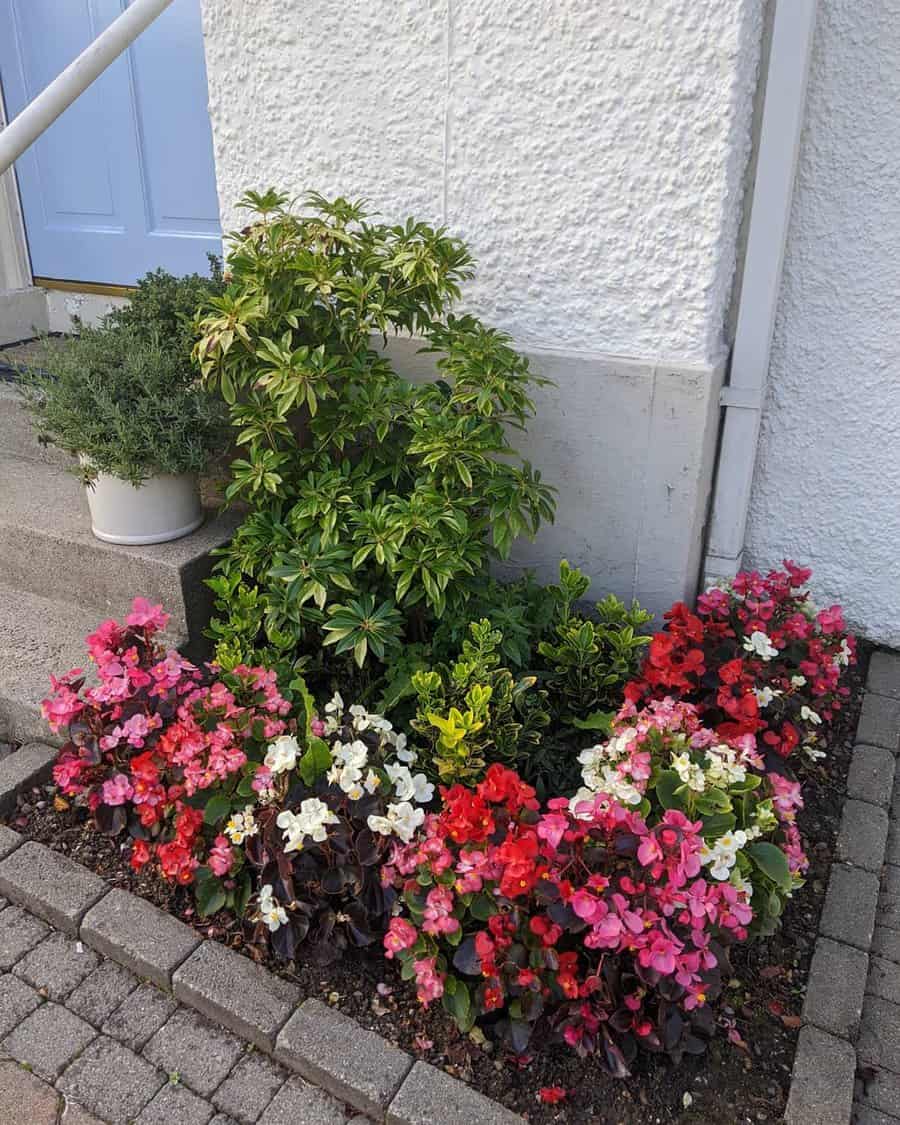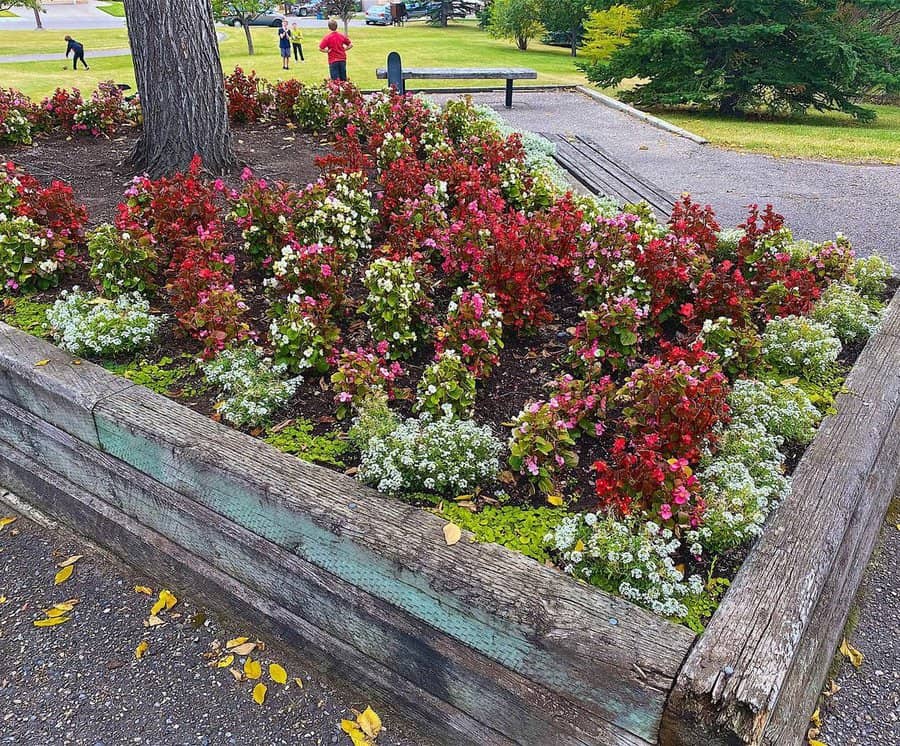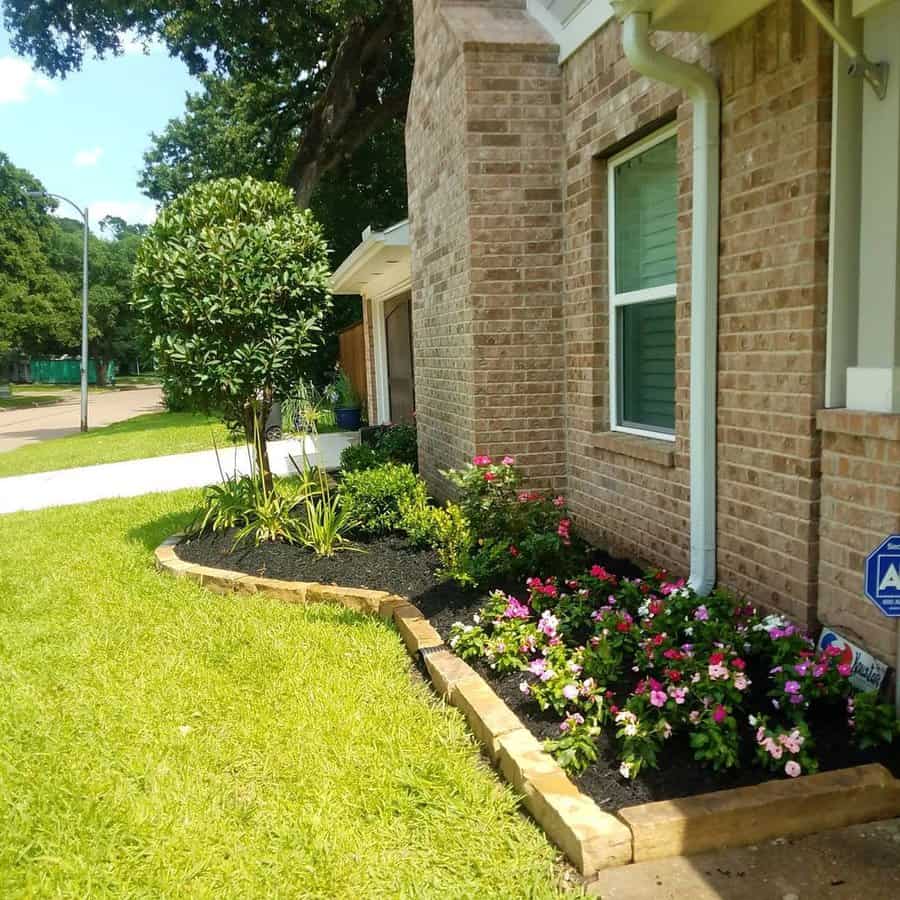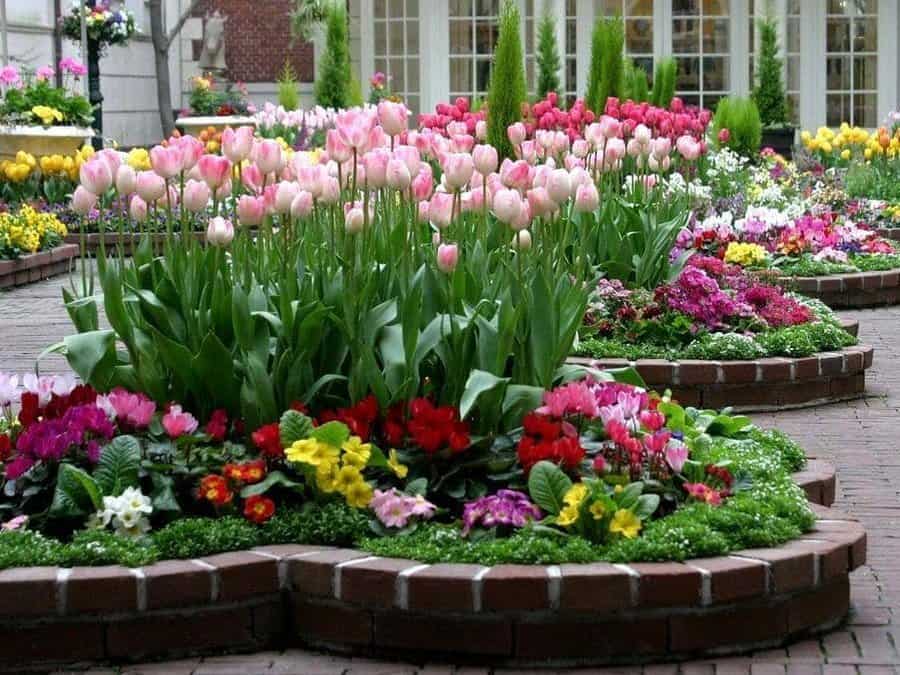
29 Creative Flower Bed Ideas for Your Garden
Nothing can quite match the charm and serenity of a beautifully designed flower bed. It adds vibrancy to your garden, transforms your outdoor space, and reflects your personal style. Whether you’re a seasoned gardener or a beginner, crafting the perfect flower bed can be both a fun and rewarding experience.
In this article, we’ll explore a multitude of flower bed ideas, from classic arrangements to modern designs, and tips on choosing the right flowers for your space. You’ll discover how to use color, shape, and texture to create stunning visual impact and make your garden truly sing.
1. Build a Tulip Raised Bed
To establish a raised tulip bed, select a sunny spot and use quality soil mixed with compost for a nutrient-rich environment. Plant tulip bulbs in the fall, about 4-6 inches deep, with the pointed end up. Space bulbs at least 4 inches apart. Water them well after planting and provide occasional watering during dry spells in spring. Mulch lightly to maintain moisture and deter weeds.

2. Tiered Edibles & Blooms
For this tiered garden, use scalloped-edge concrete blocks to create a visually appealing stair-like structure. Plant strawberry plants in the first tier; their cascading growth is both aesthetic and functional, providing easy access for harvesting.
In the second tier, plant daffodils, choosing varieties with white and yellow blossoms to signal the arrival of spring. This combination of edibles and ornamentals creates a dynamic and productive garden space.
Ensure each tier has adequate soil depth and drainage to support the different plant needs, and consider adding organic matter to enrich the soil.
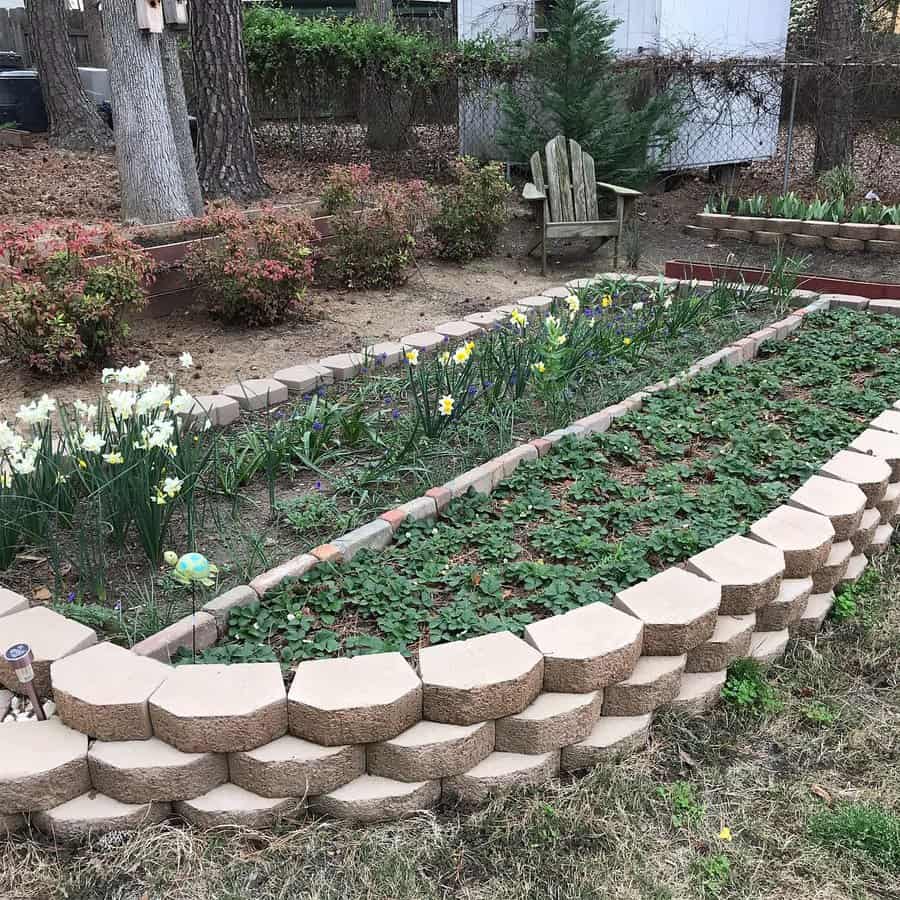
3. Vibrant Marigold Bed
For a vibrant marigold bed, choose a location with full sun and well-draining soil. Plant marigold seeds after the last frost, or start with nursery-grown seedlings for quicker blooms. Space plants about 8 inches apart to ensure good air circulation. Regularly deadhead spent blooms to encourage continuous flowering throughout the season. Marigolds are low-maintenance and often deter pests, making them great for beginner gardeners.
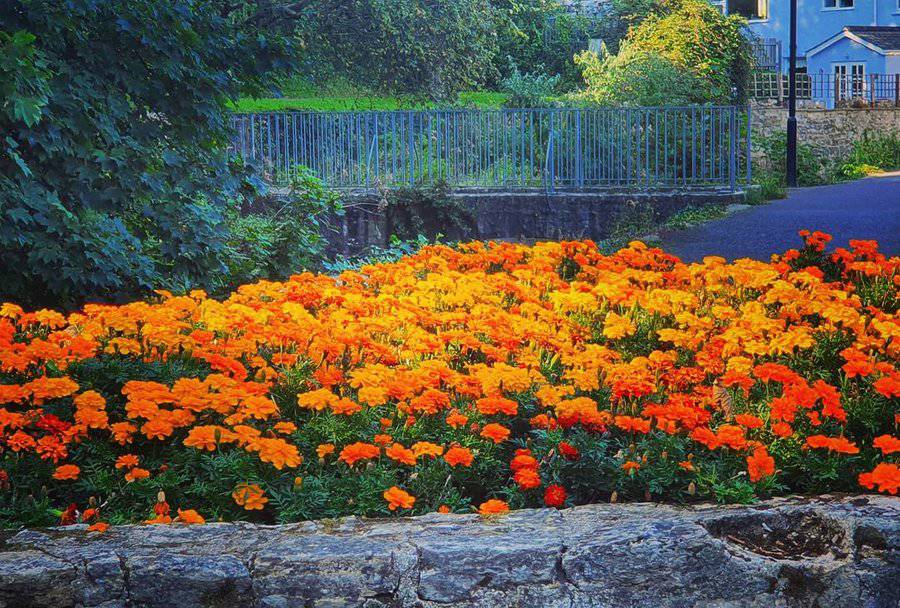
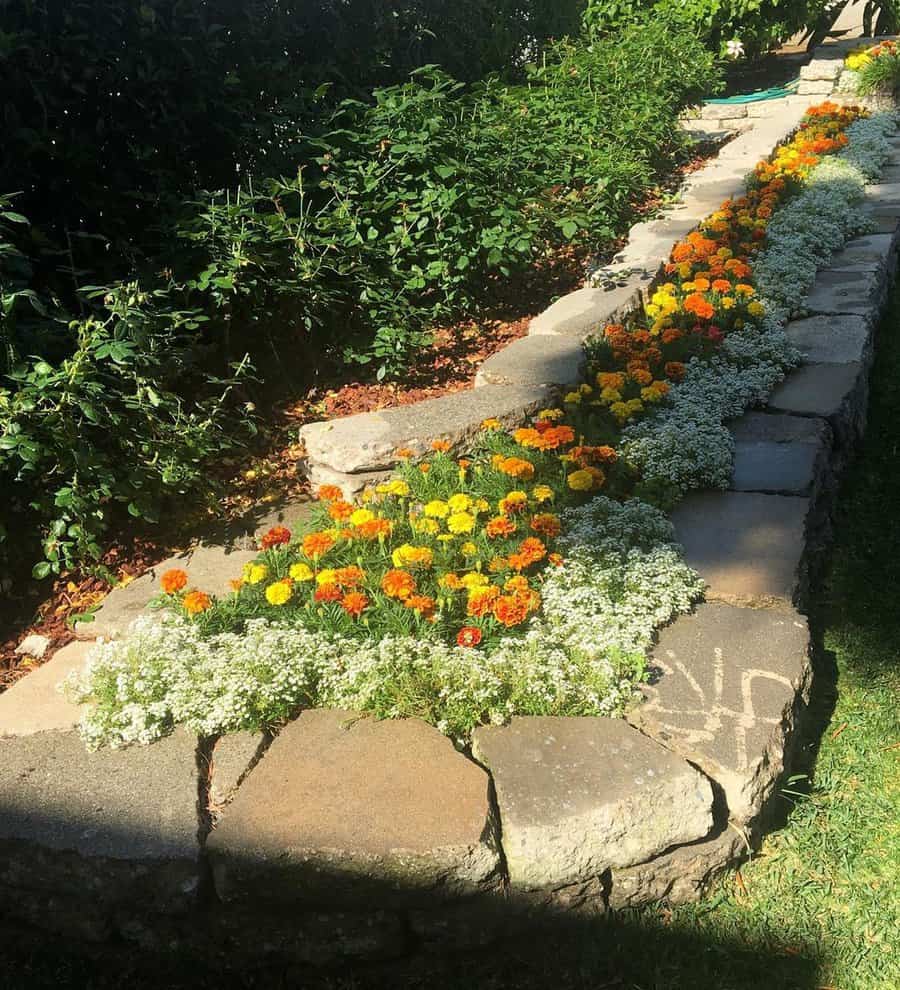
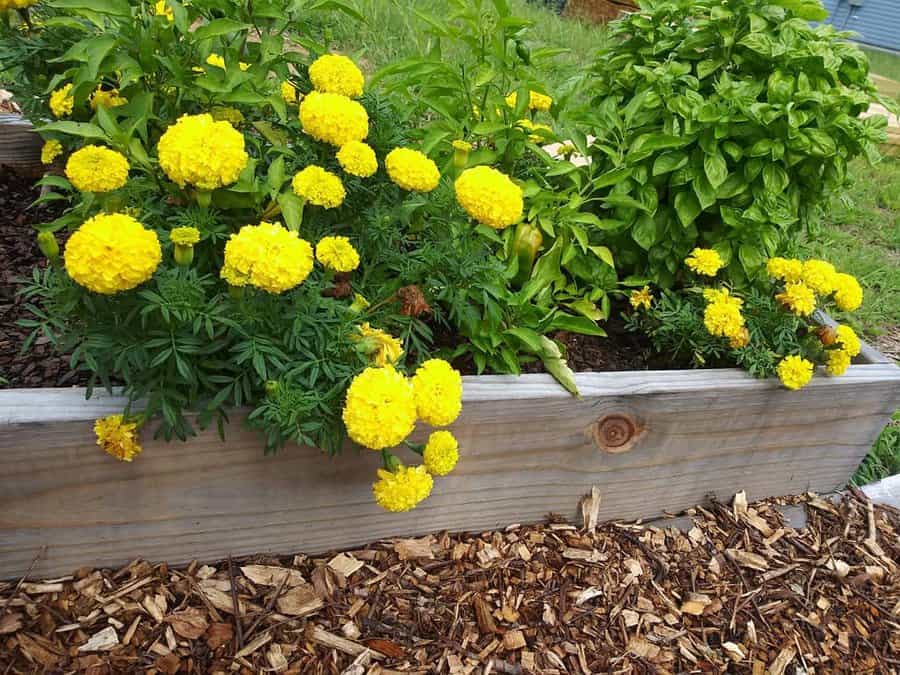
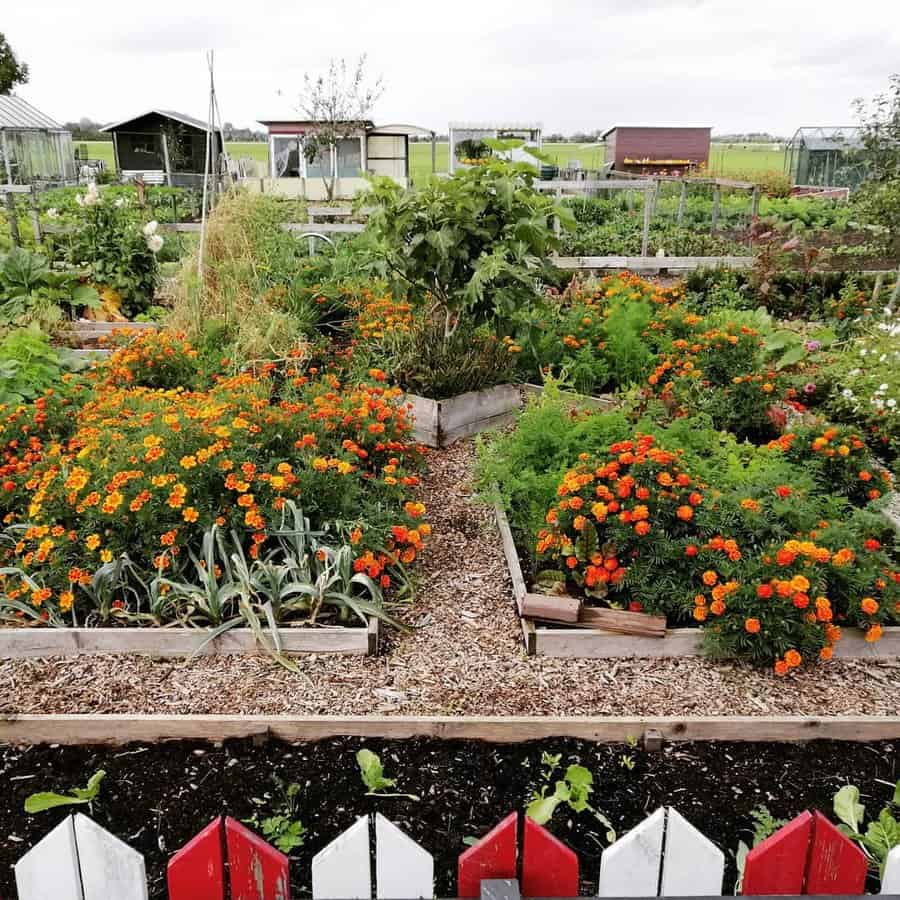
4. Craft a Cement Garden Bed
Construct a durable, weather-resistant bed using cement blocks. Measure and outline the desired area, then lay the blocks to form the perimeter. Ensure the bed is level and fill it with a mix of garden soil, compost, and if needed, sand for drainage. This type of bed works well for deep-rooted plants and can be customized to any size or shape.
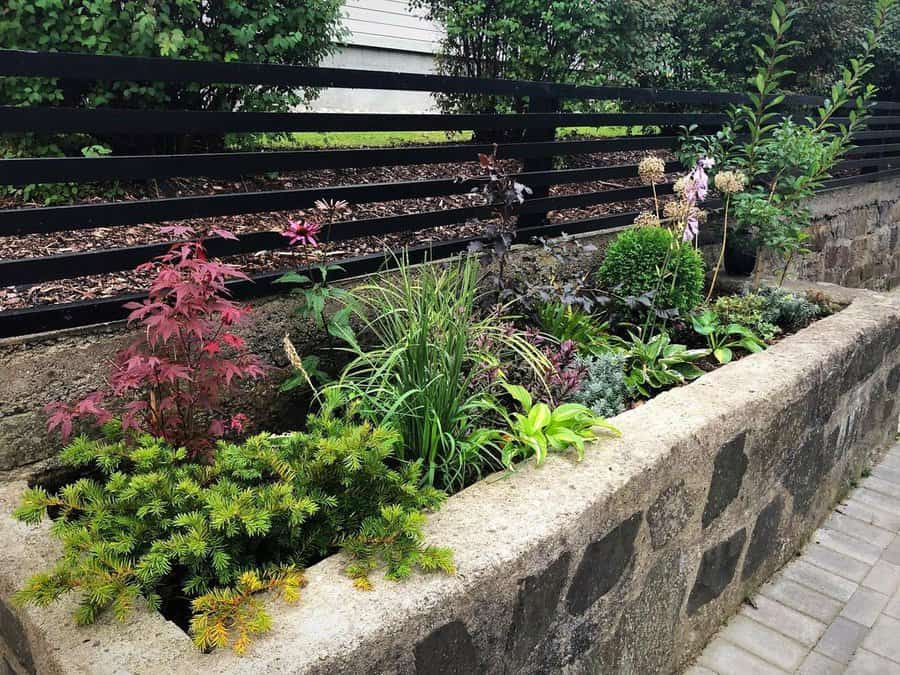
5. Effective Mulching Techniques
Apply a 2-3 inch layer of organic mulch like shredded bark or straw around plants in your flower bed. Mulch retains moisture, regulates soil temperature, and suppresses weed growth. Keep mulch a few inches away from plant stems to prevent rot. Replenish mulch as needed, usually annually, to maintain its benefits.
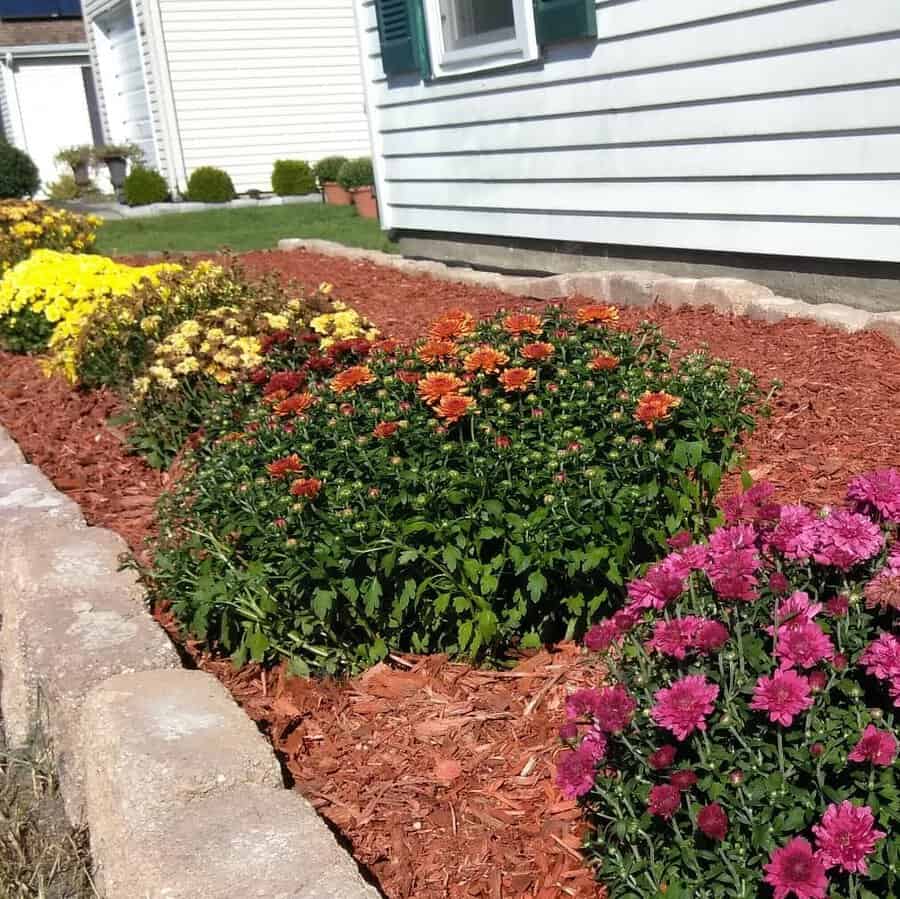
6. Raised Bed: House Border
Position this bed at least 2 feet away from your home’s foundation to prevent moisture problems. Use weather-resistant materials like cedar or stone for construction. Ensure good drainage by adding a mixture of garden soil and compost. Raised beds are ideal for controlling soil quality and can offer a visually appealing structure against the house backdrop.
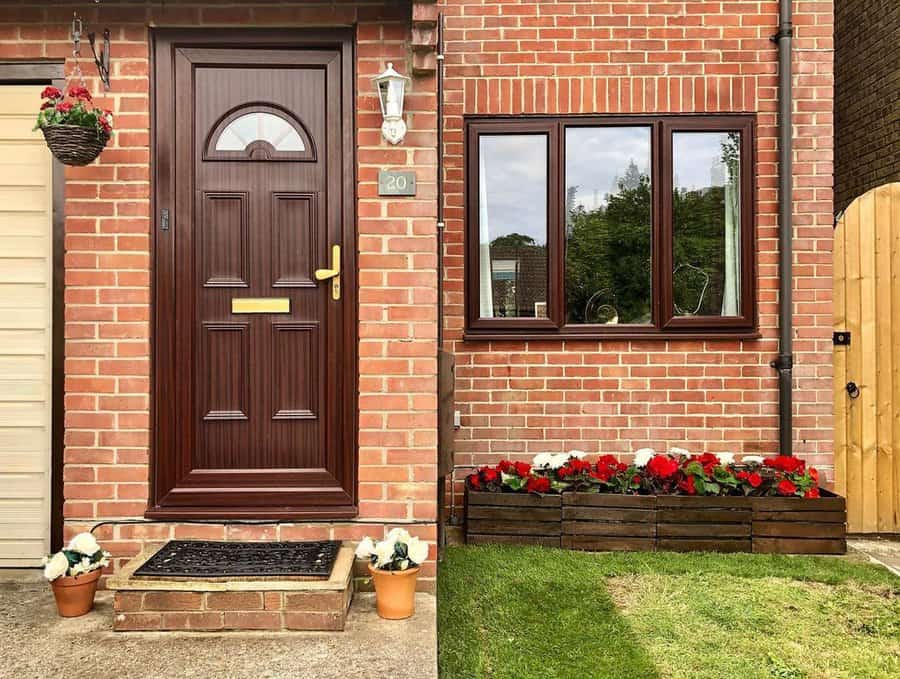
7. Integrate Container Plants
Introduce containers in varying sizes and colors among your flower beds for added dimension and flexibility. They’re perfect for seasonal plants or those with different soil requirements. Ensure containers have drainage holes and are filled with a high-quality potting mix. This approach allows for easy rearrangement and updating of your garden’s look.
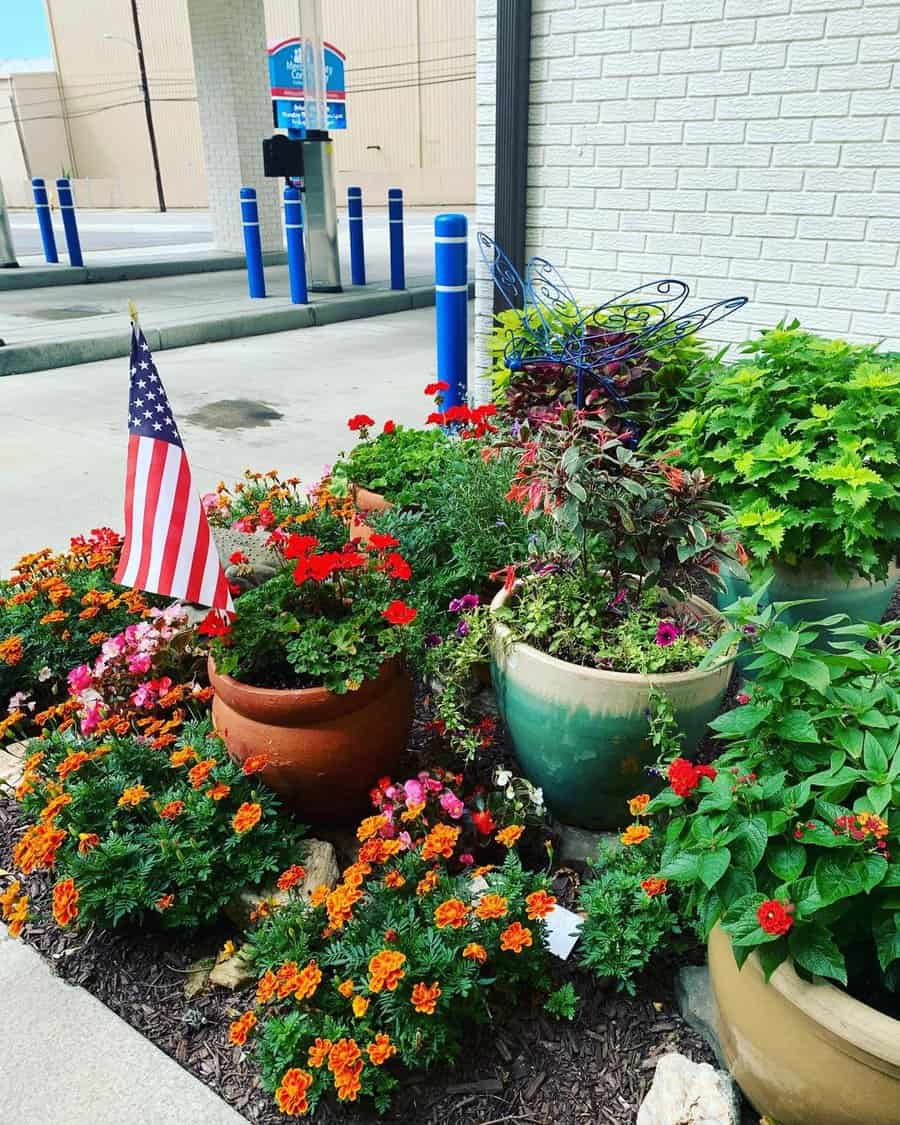
8. Wooden Bed Edging
Install wood edging to define the garden bed and create a neat, organized appearance. Choose rot-resistant wood like cedar or redwood. Cut wood to the desired length and securely embed it in the ground, ensuring it’s level. This edging helps to contain soil and mulch, and simplifies mowing and trimming around the bed.
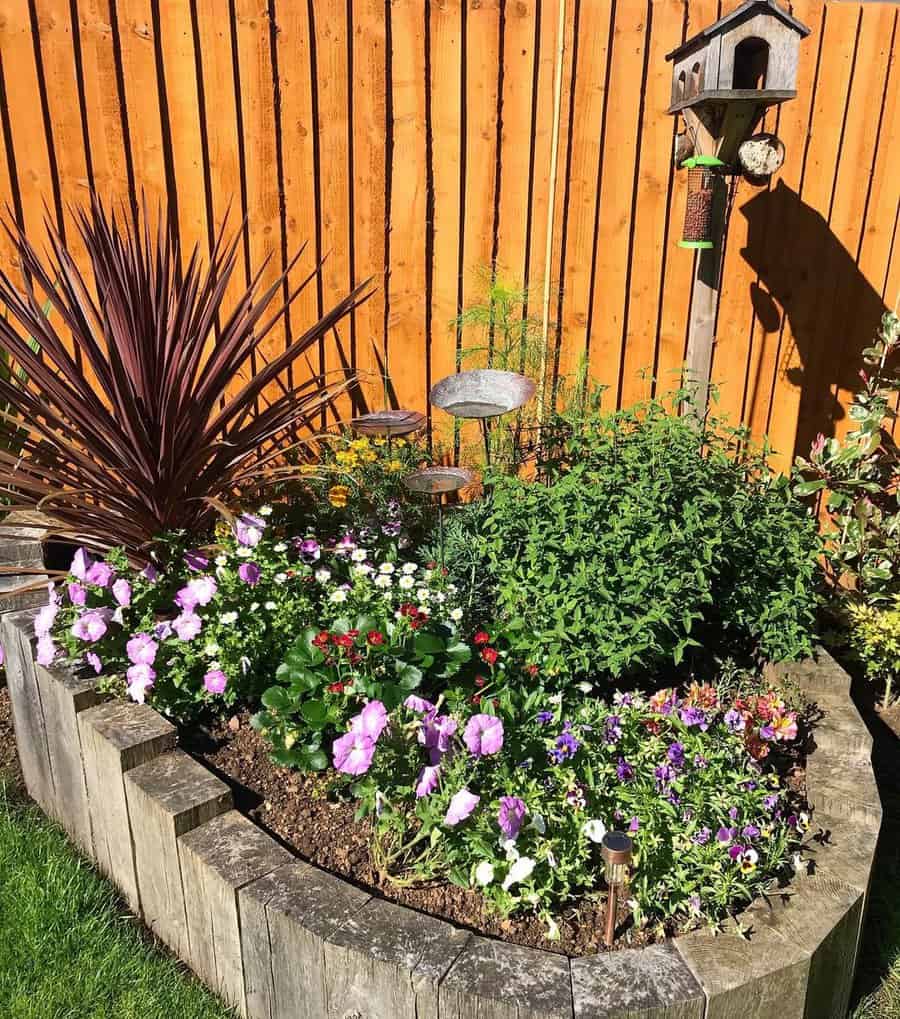
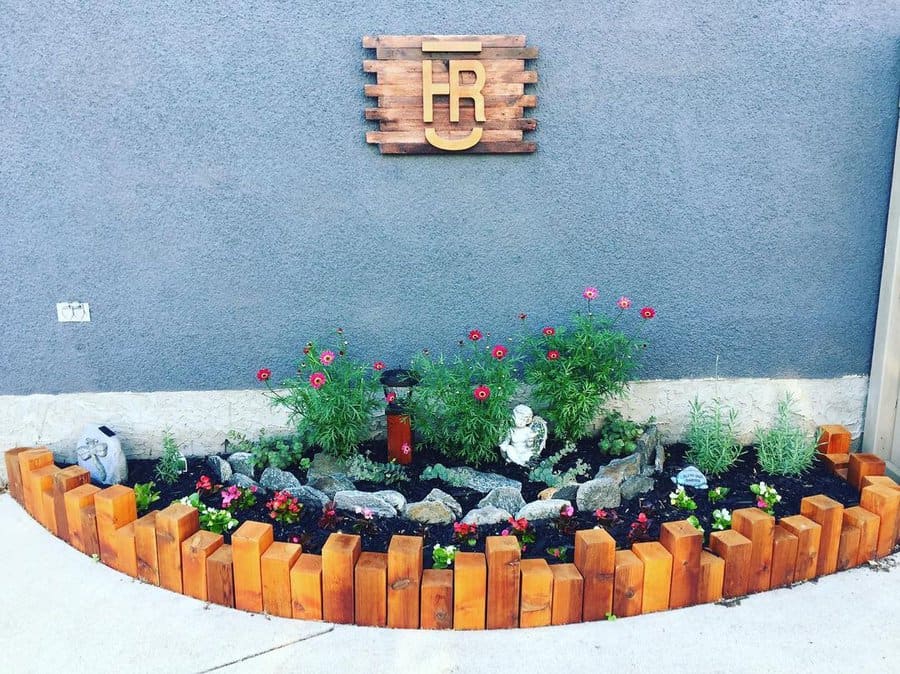
9. Design a Minimalist Garden
Design this garden with simplicity and elegance by planting few white petunias and carnations. Space plants evenly, keeping the design symmetrical and uncluttered. This approach emphasizes the beauty of each plant and is low-maintenance. Use a monochromatic color scheme and simple, clean lines for planters and decorations to maintain the minimalist vibe.
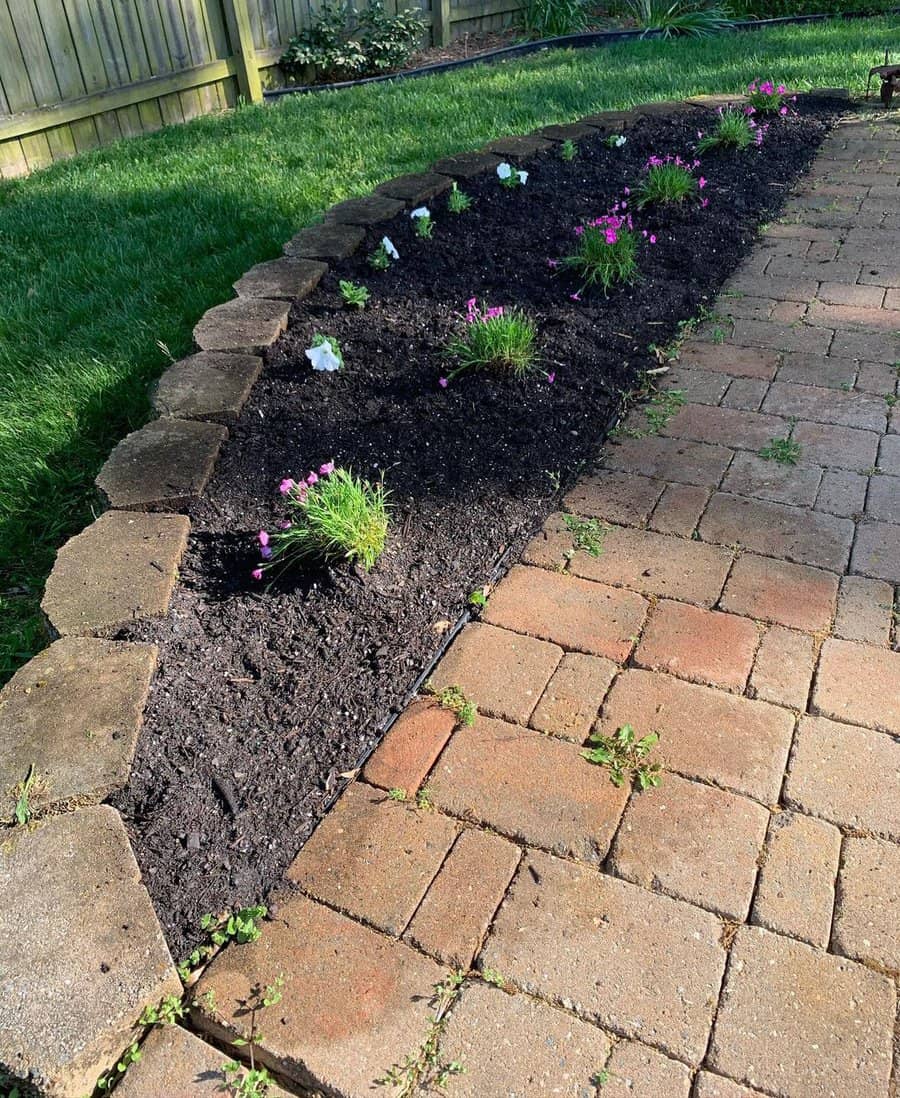
10. Central Garden Fountain
A fountain serves as a focal point and adds a serene element to your garden. Place it centrally in a flower bed, surrounded by low-growing, colorful flowers that don’t obstruct the view. Ensure the fountain’s style complements your garden’s theme. Regularly maintain the fountain to keep it functioning and clean.
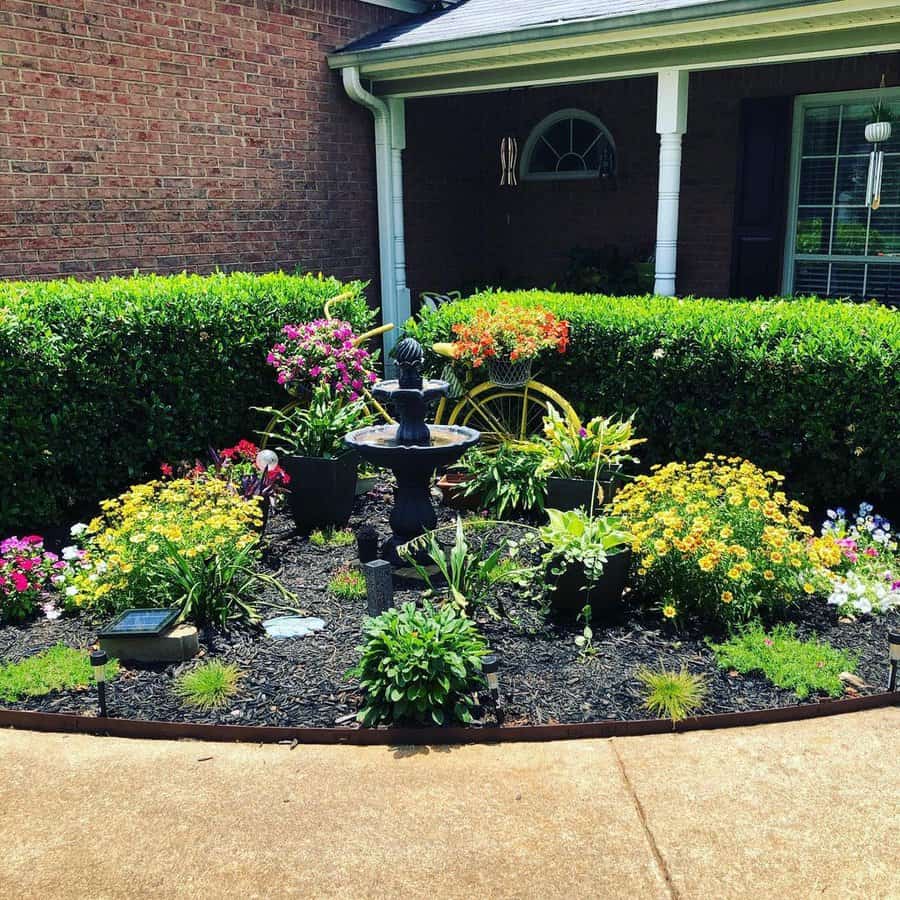
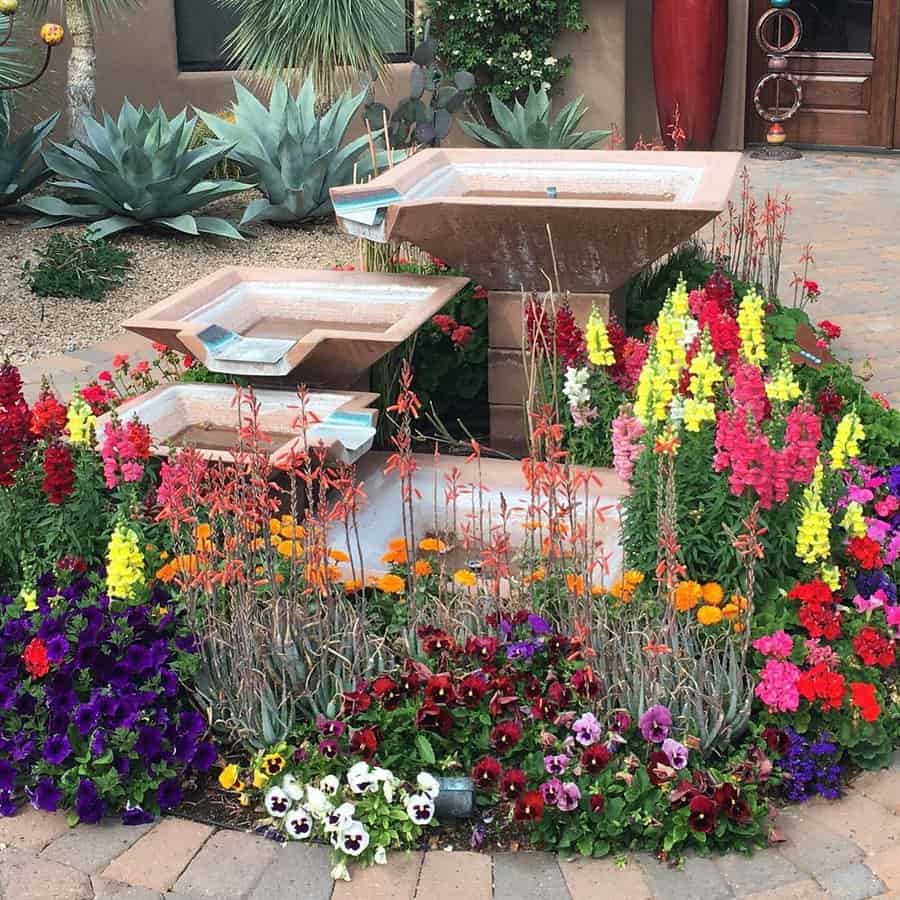
11. Shape Geometric Beds
Create beds in shapes like circles, triangles, or hexagons for a modern look. Use bright marigolds, purple ageratum, red begonias, and structural grasses or shrubs. Geometric beds are visually striking and can be used to direct the eye or create divided spaces in the garden. Plant taller species in the center or at the back of the bed for depth.
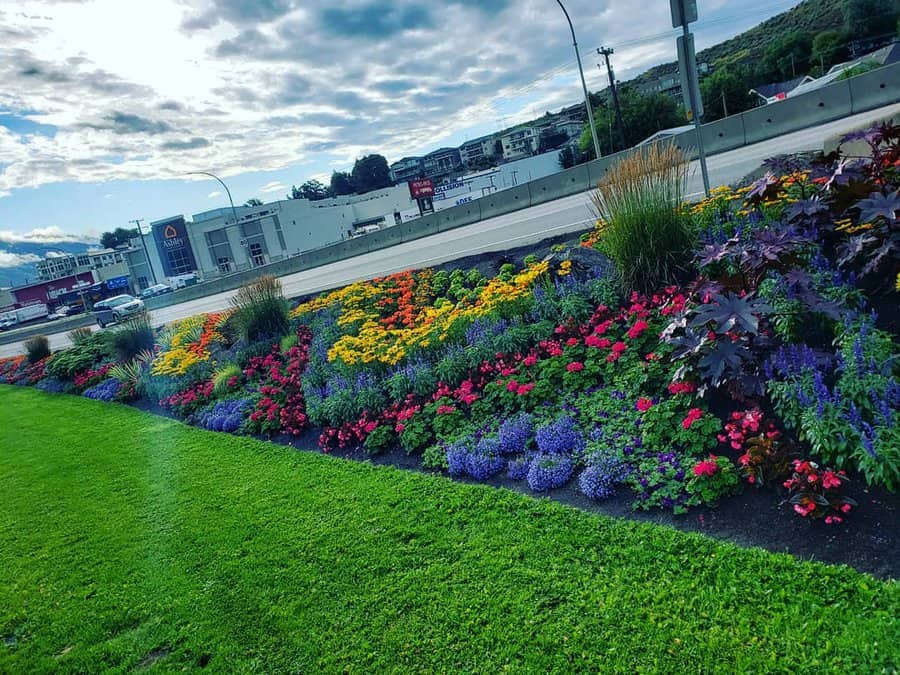
12. Mix Perennials and Ornamentals
Combine Echinacea and salvia for a bed that offers both aesthetic appeal and longevity. These perennials provide color and texture throughout the growing season. Group plants in odd numbers for a natural look, and consider bloom times to ensure continuous color. Both plants attract pollinators, adding ecological value to your garden.
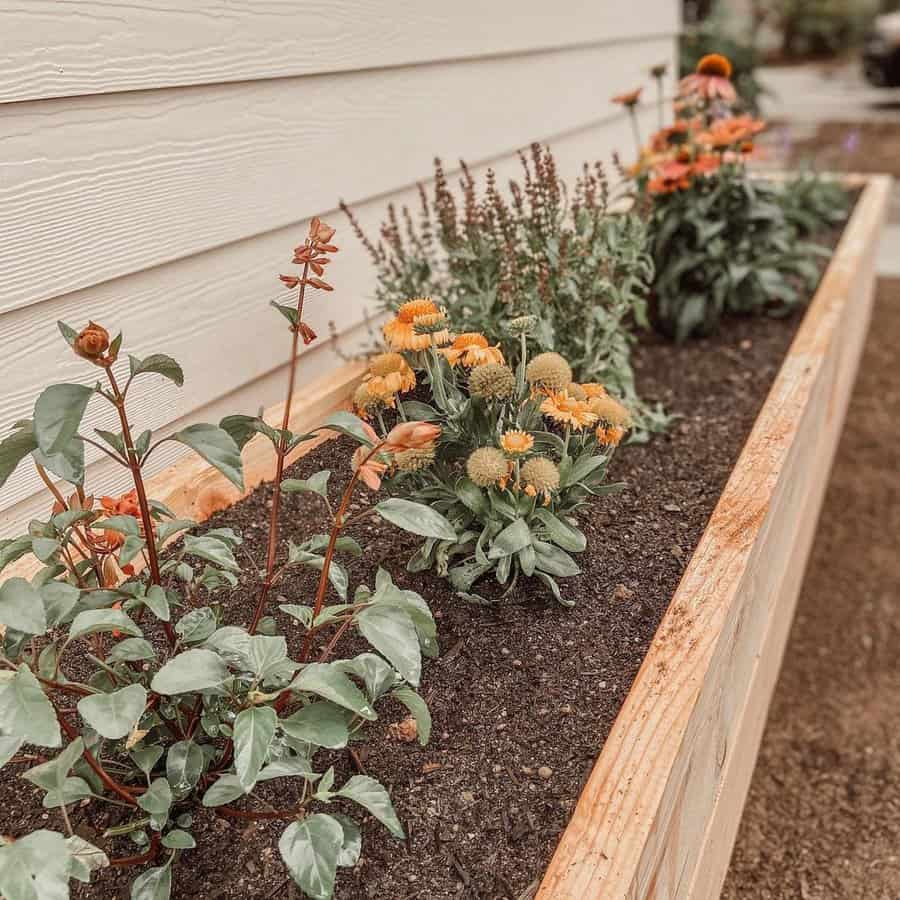
13. Cultivate a Rose Haven
Select a sunny, well-draining spot for your rose garden. Amend the soil with organic matter and ensure it’s rich and loamy. Space rose bushes to allow for air circulation, reducing the risk of fungal diseases. Regular pruning, deadheading, and proper watering are key to maintaining healthy roses. Consider companion plants like lavender or catmint to complement the roses.
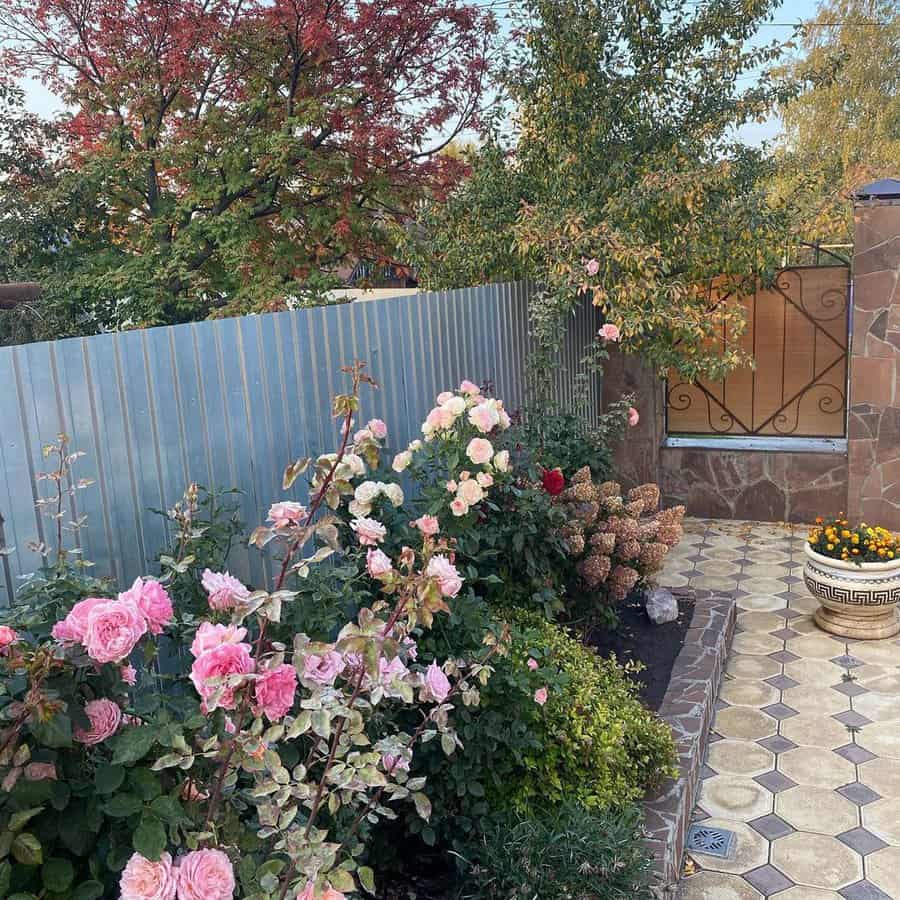
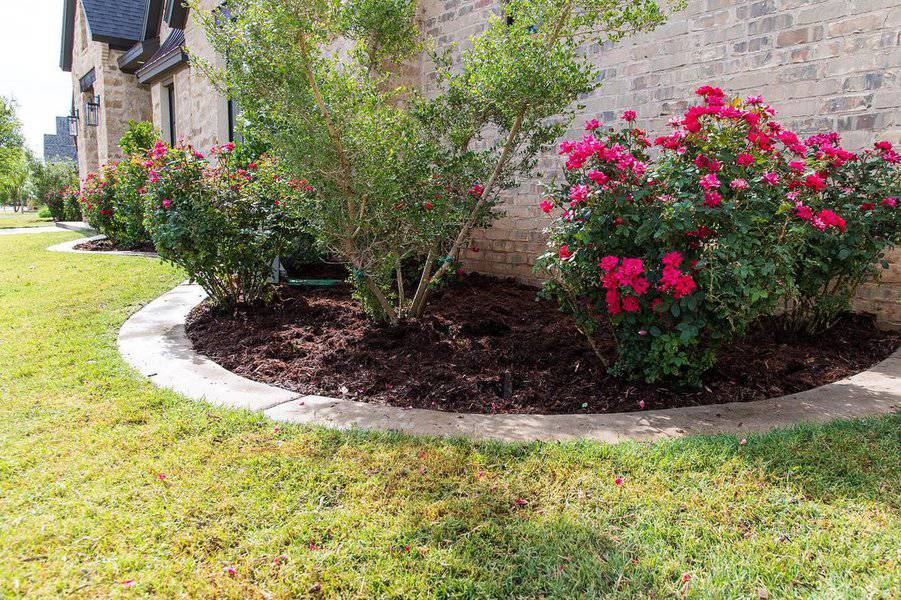
14. Fence-Line Raised Beds
Install raised beds along your fence line to create a border full of color and texture. Choose a mix of perennial and annual flowers for year-round interest. Ensure the bed receives adequate sunlight and is accessible for maintenance. This setup can also help to conceal less attractive sections of the fence.
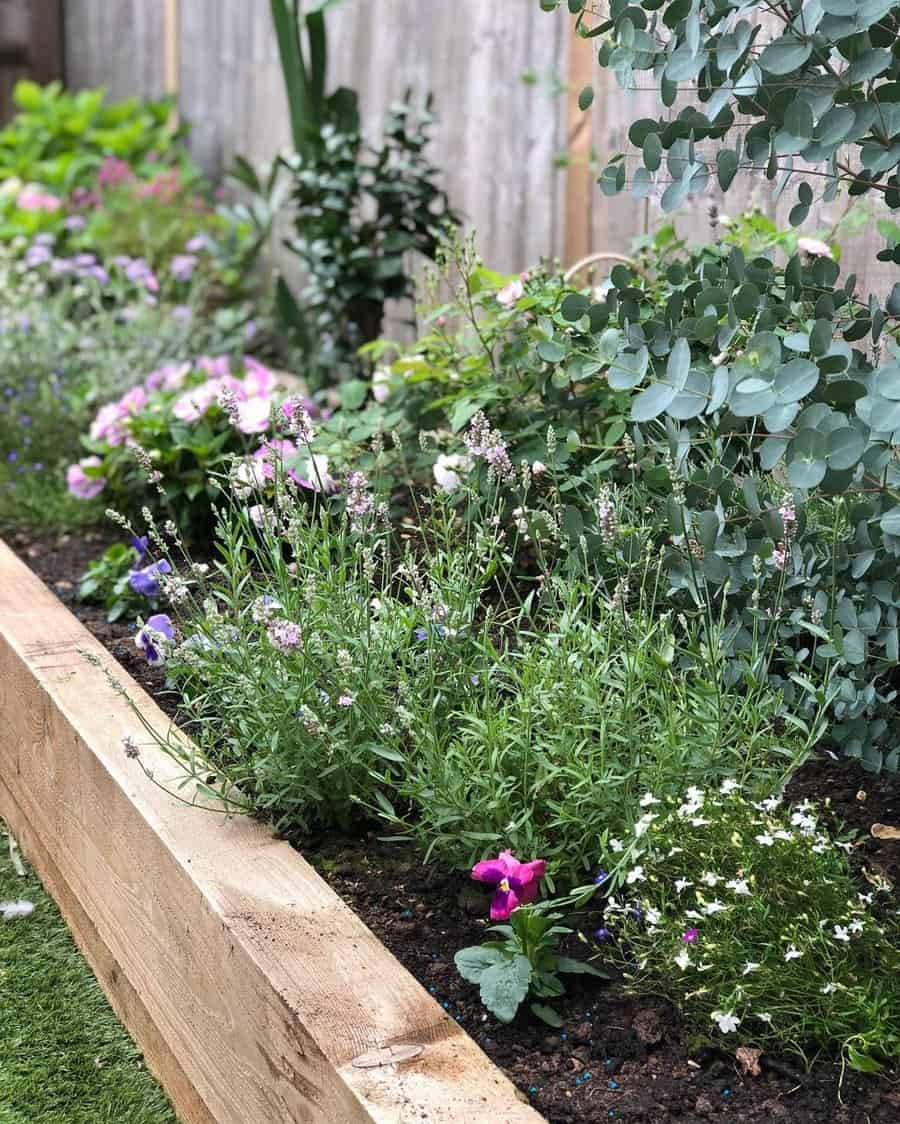
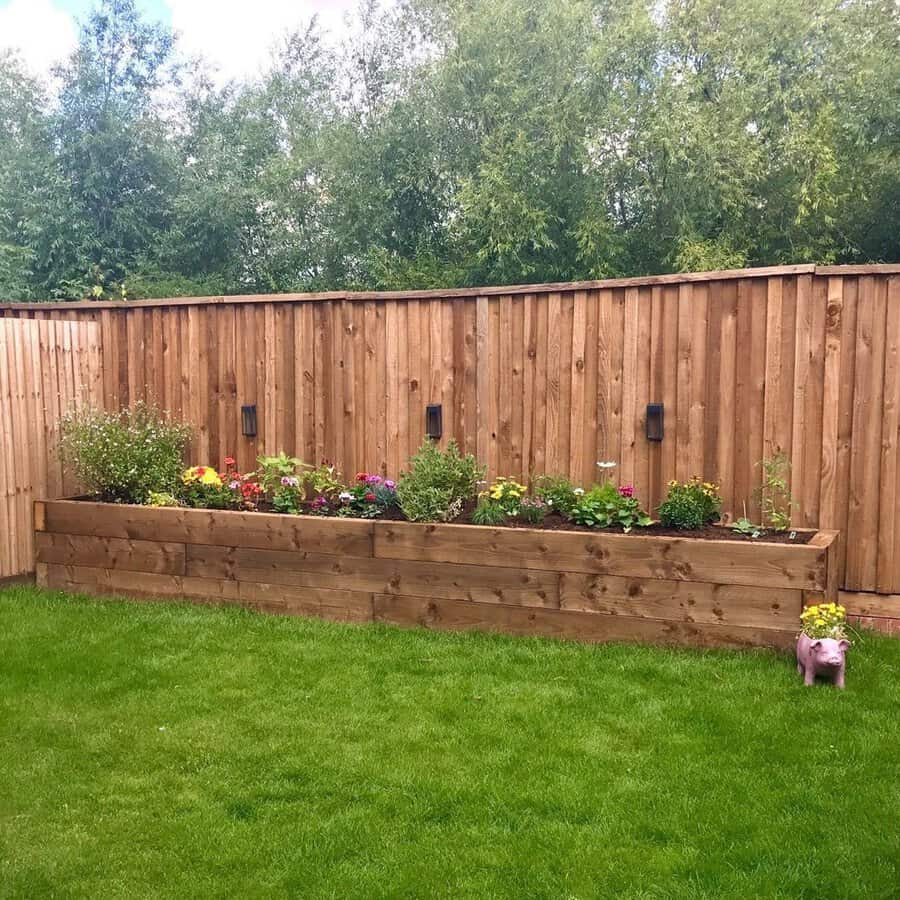
15. Pansy Color Explosion
Plant pansies in a spot with full sun to partial shade and well-drained soil. They thrive in cooler temperatures and can be planted in early spring or fall. Pansies come in a variety of colors and patterns, allowing for creative and vibrant bed designs. Regular deadheading will keep the bed looking fresh and encourage more blooms.
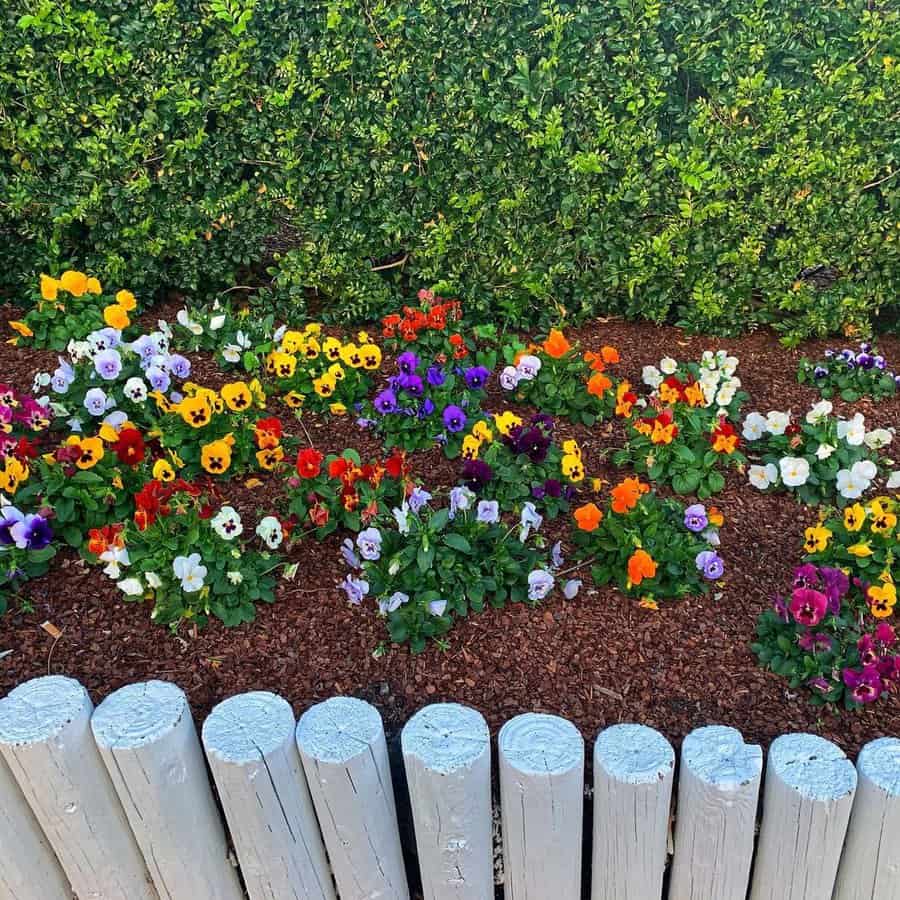
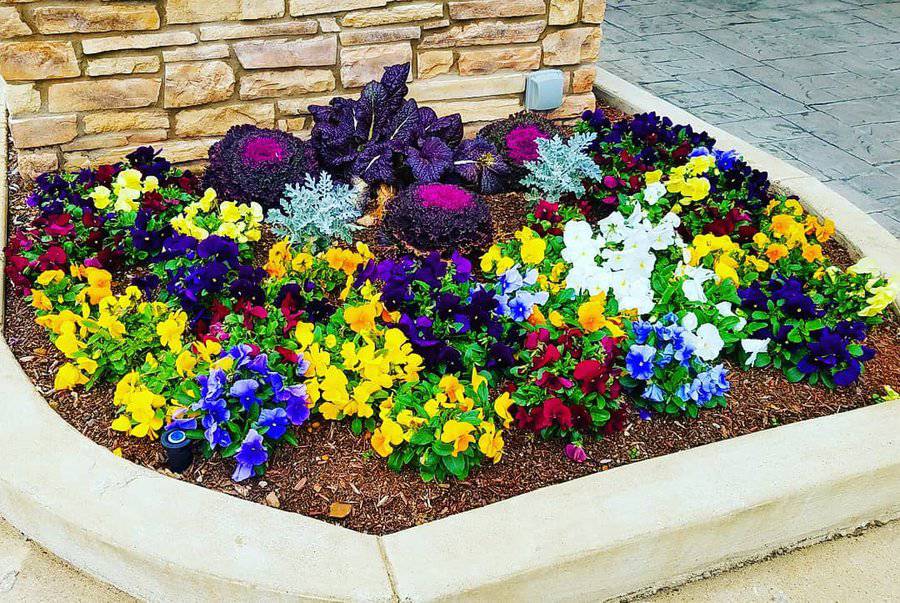
16. Lush Petunia Display
Create a stunning display with pink and rose petunias. They thrive in full sun and well-draining soil. Space plants about 12 inches apart to allow for growth and air circulation. Regular watering, especially during dry periods, and monthly fertilization will keep petunias blooming vigorously. Deadhead spent flowers to encourage new blooms.
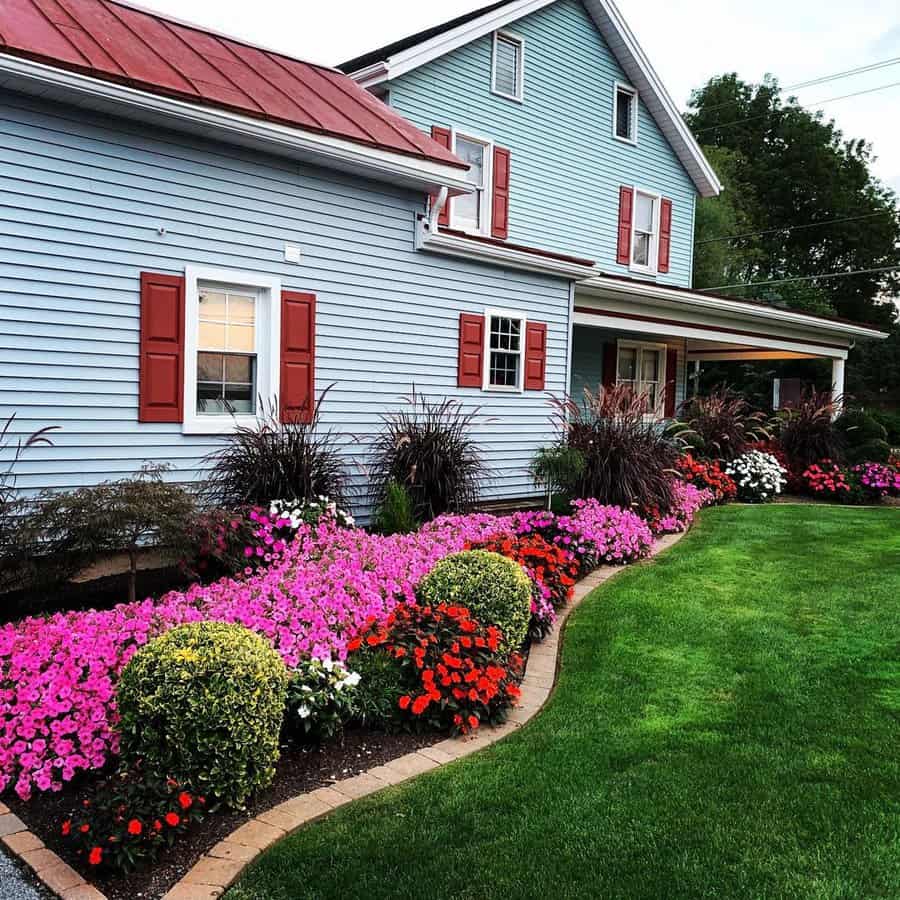
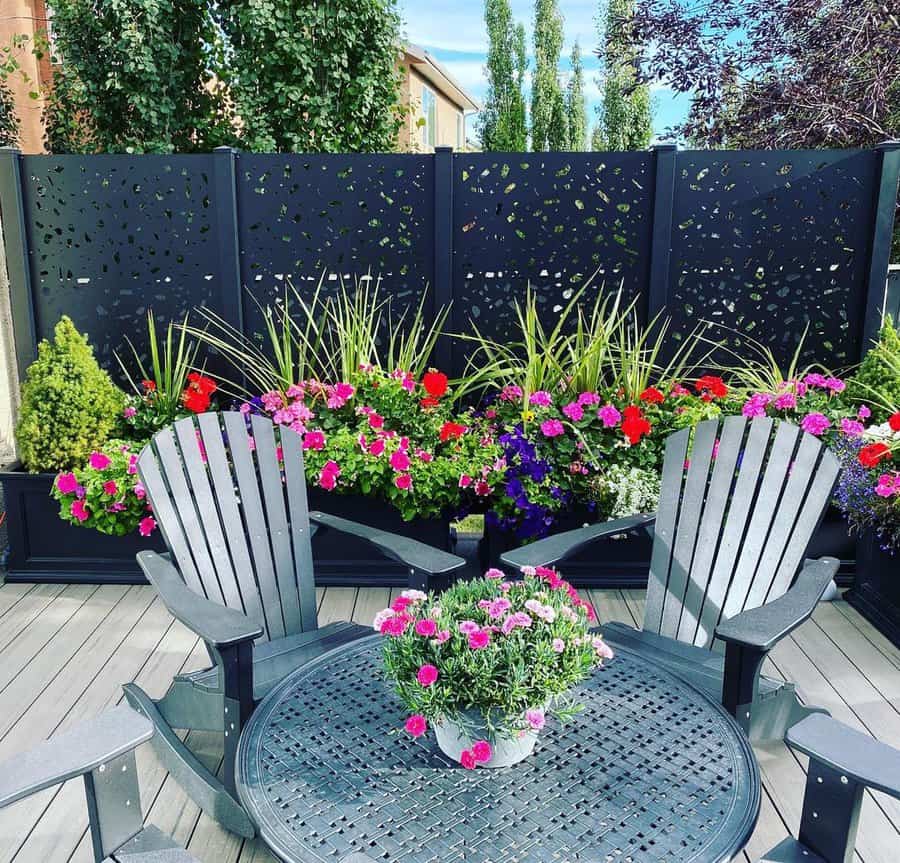
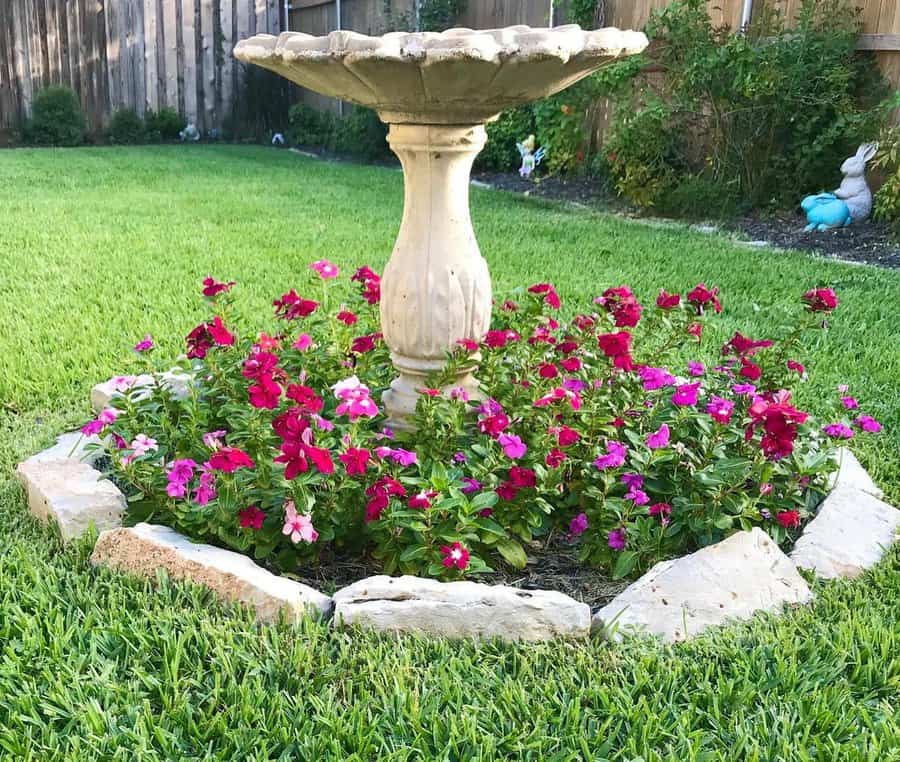
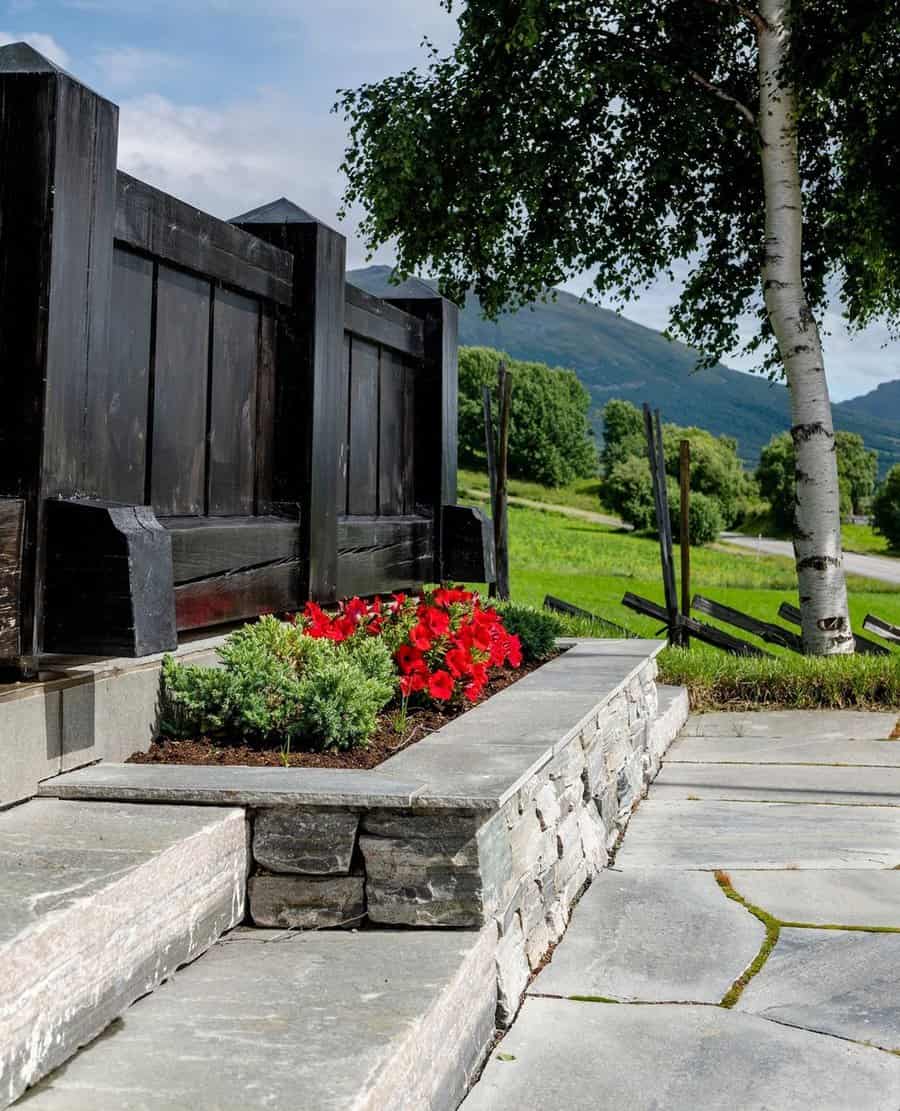
17. Hydrangea Haven
Choose a location with morning sun and afternoon shade for hydrangeas. They prefer rich, moist soil that’s well-draining. Amend the soil with organic material for best growth. Hydrangeas’ color can be influenced by soil pH: acidic soil for blue flowers and alkaline for pink. Water them deeply once a week, more in extreme heat.
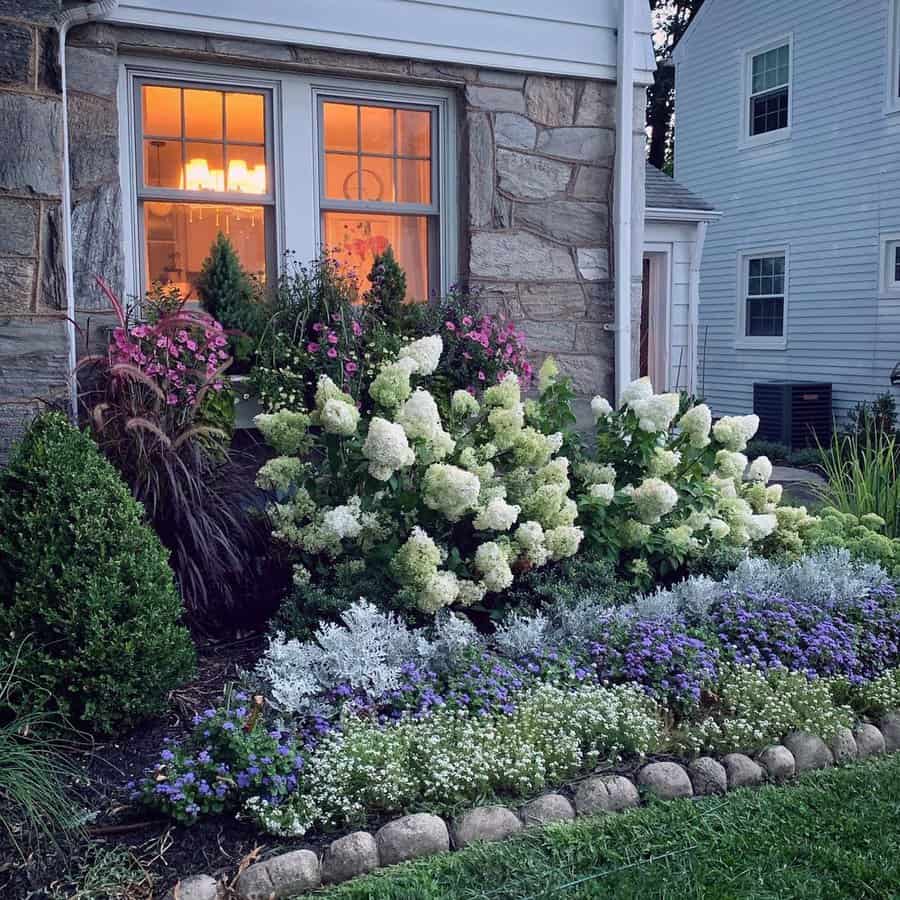
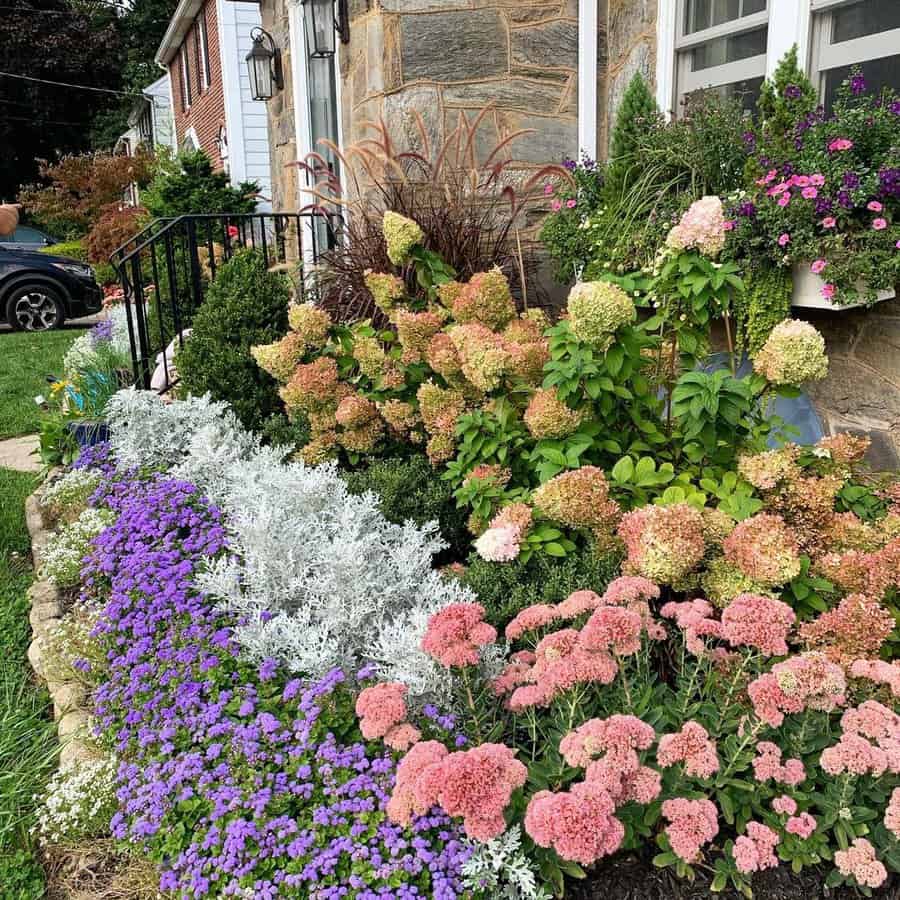
18. Daylily Delights
Daylilies are hardy and versatile, ideal for beginner gardeners. They prefer full sun but can tolerate some shade. Plant them in well-drained soil, and water regularly, especially during dry spells. Remove spent blooms and trim back foliage in late fall for tidiness. Daylilies are available in various colors and bloom times, offering flexibility in design.
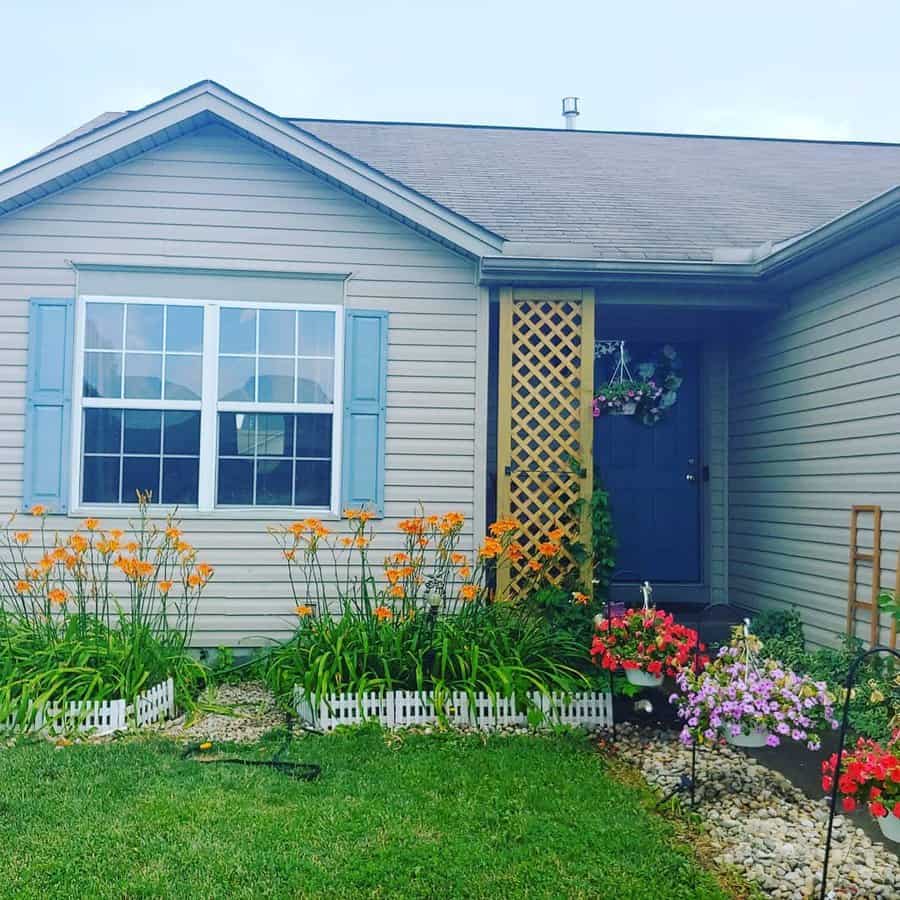
19. Harmonious Flower Combinations
Select flowers with similar sun, soil, and water requirements. Good companions for mixed beds include coneflowers, black-eyed Susans, and Russian sage. These combinations create a diverse, robust display and can attract beneficial insects. Regular deadheading and trimming will keep the bed looking neat and encourage more blooms.
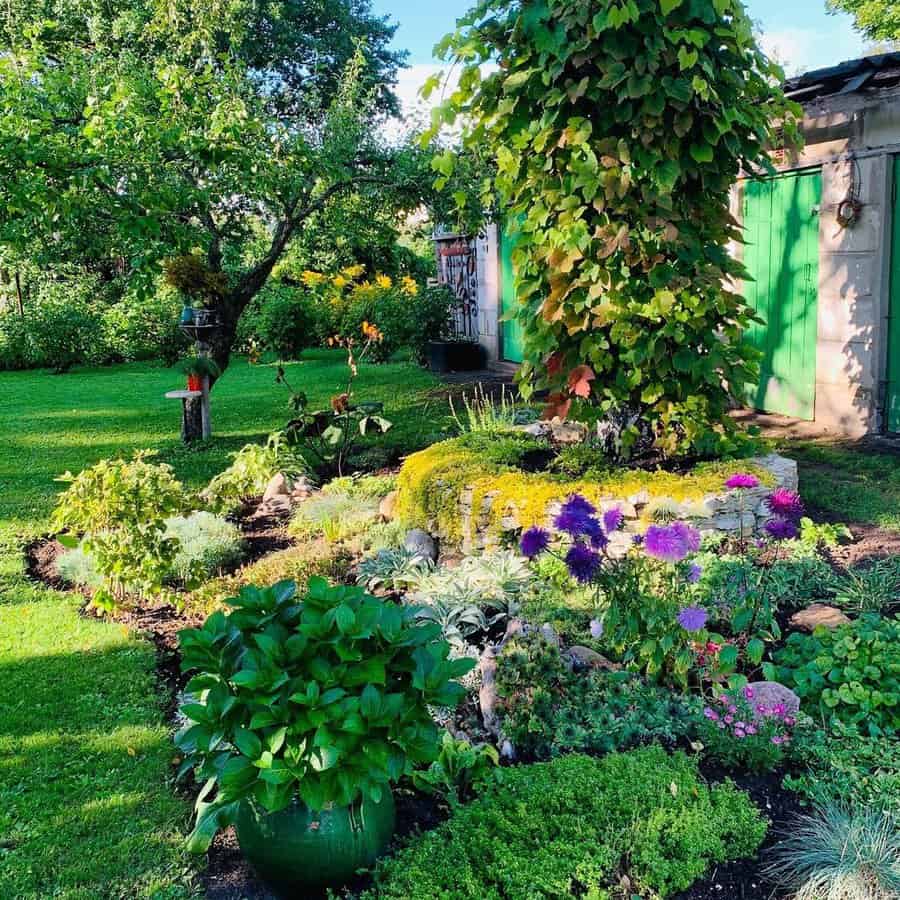
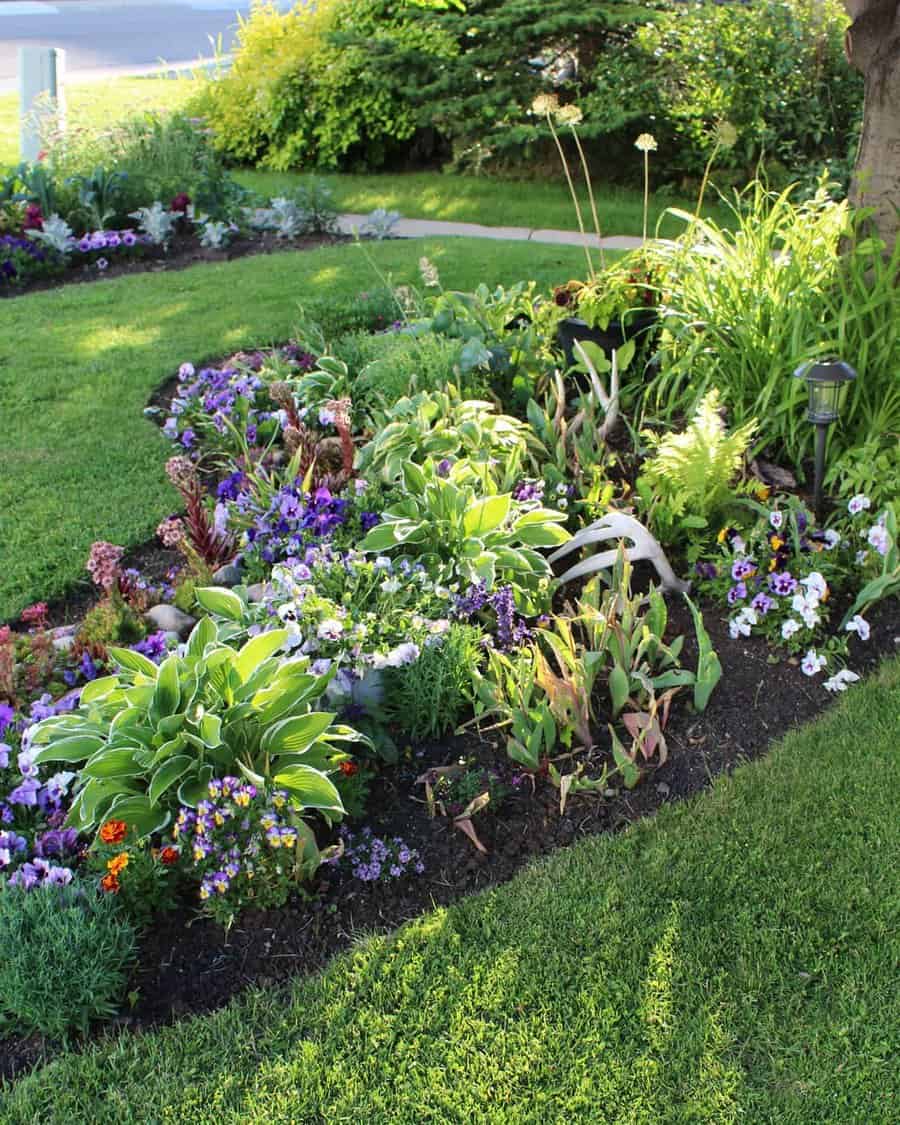
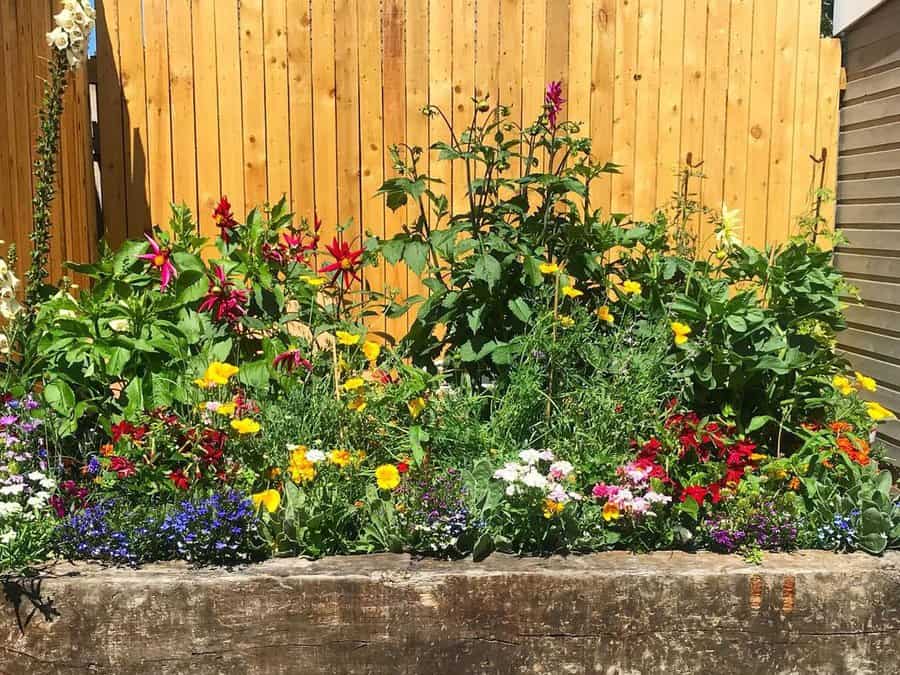
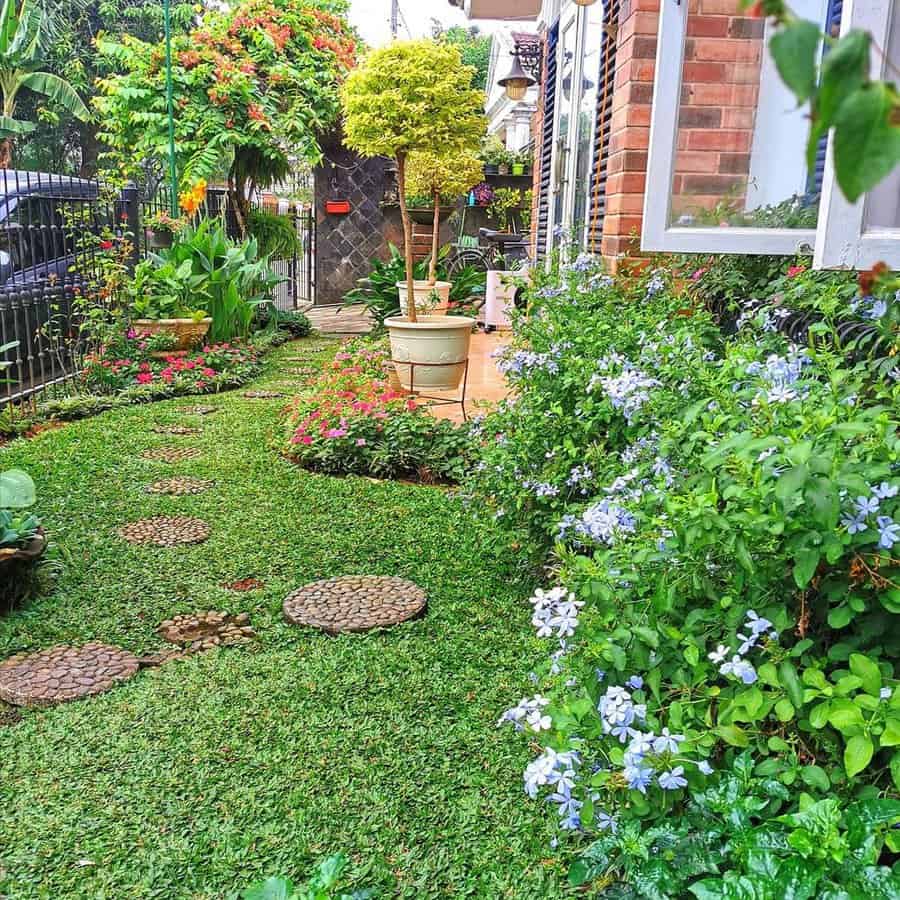
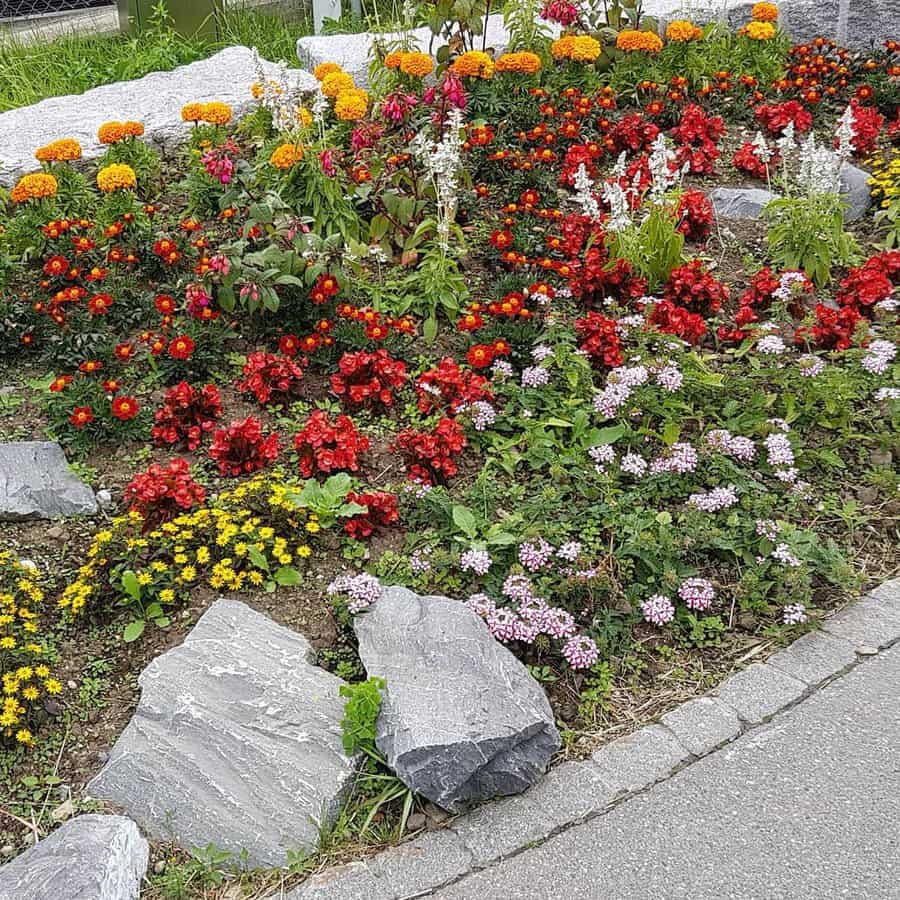
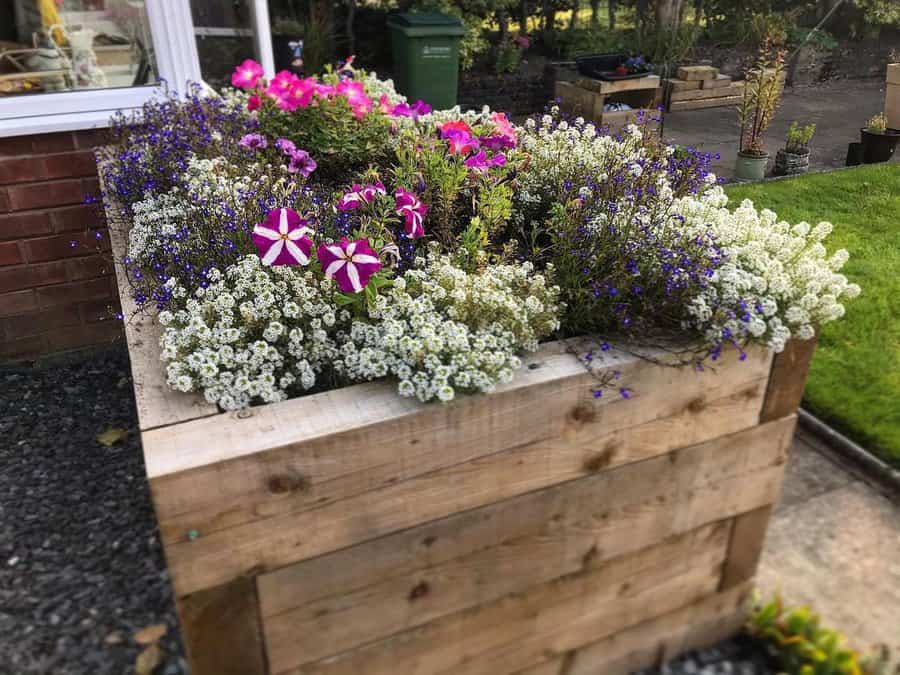
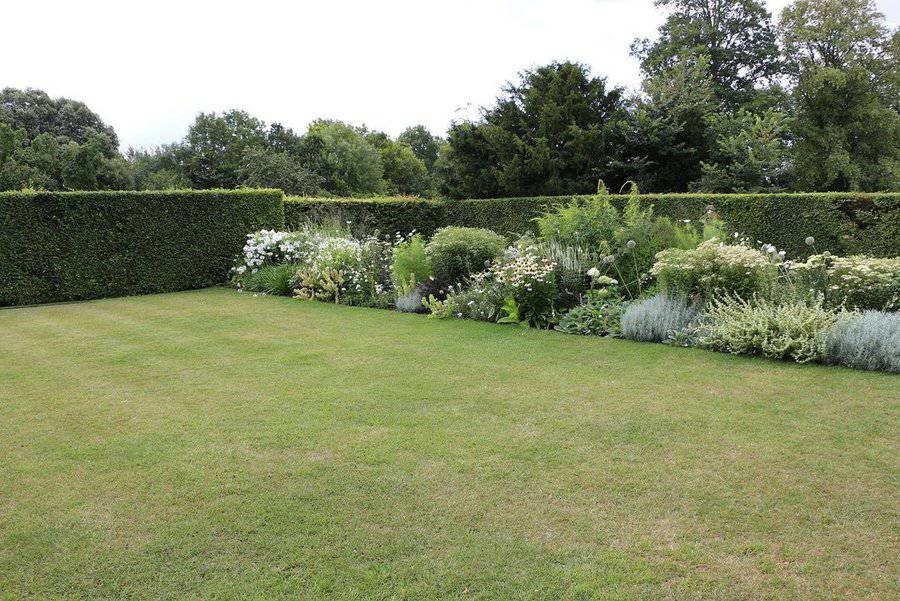
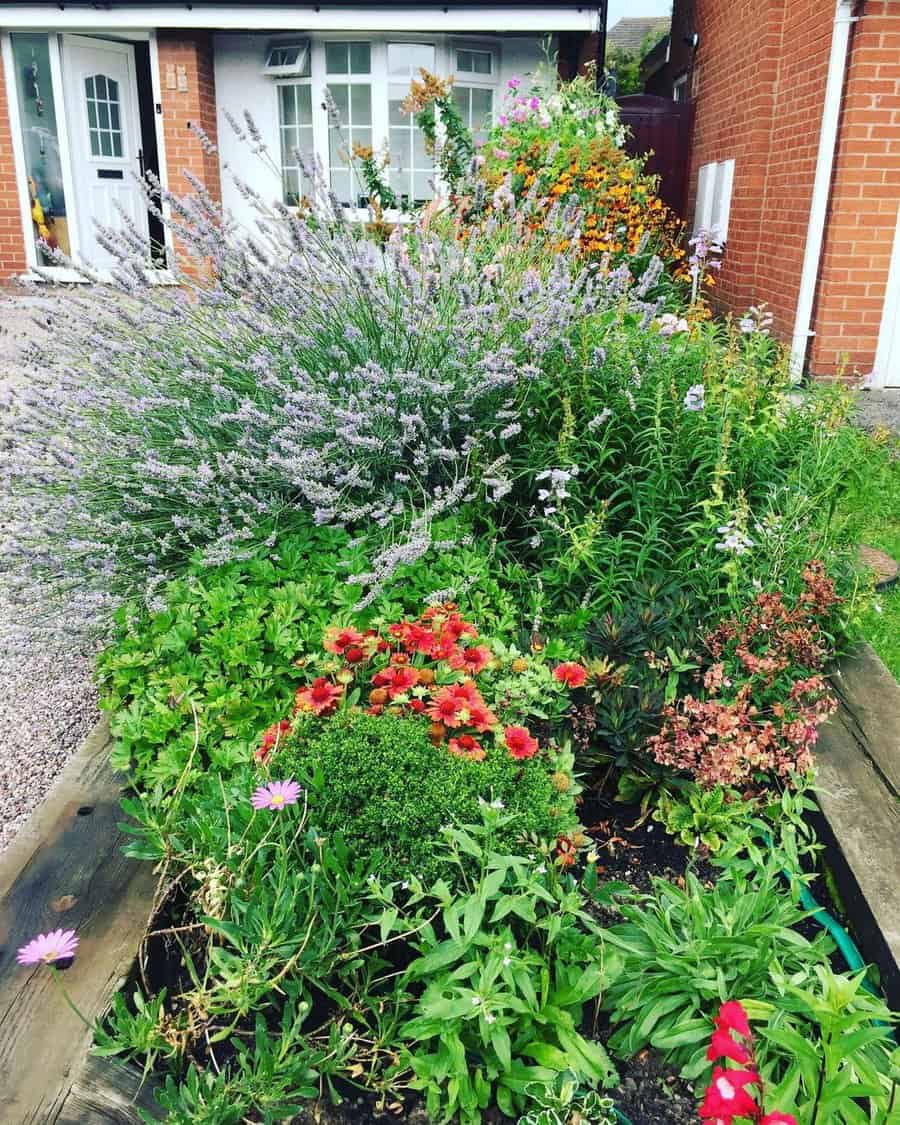
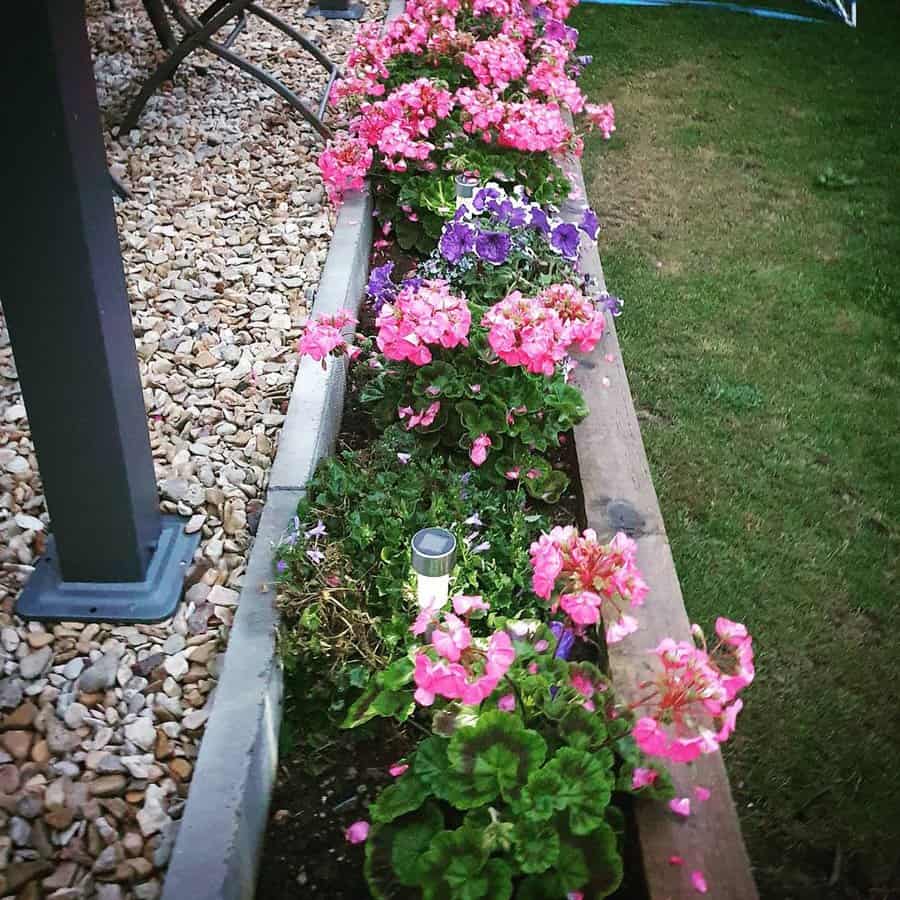
20. Salvia Spectacle
Salvias are excellent for adding height and color. They prefer full sun and well-drained soil. Space plants about 18 inches apart to allow for mature growth. They are drought-tolerant once established, requiring minimal watering. Deadheading spent blooms encourages more flowers and extends the blooming season.
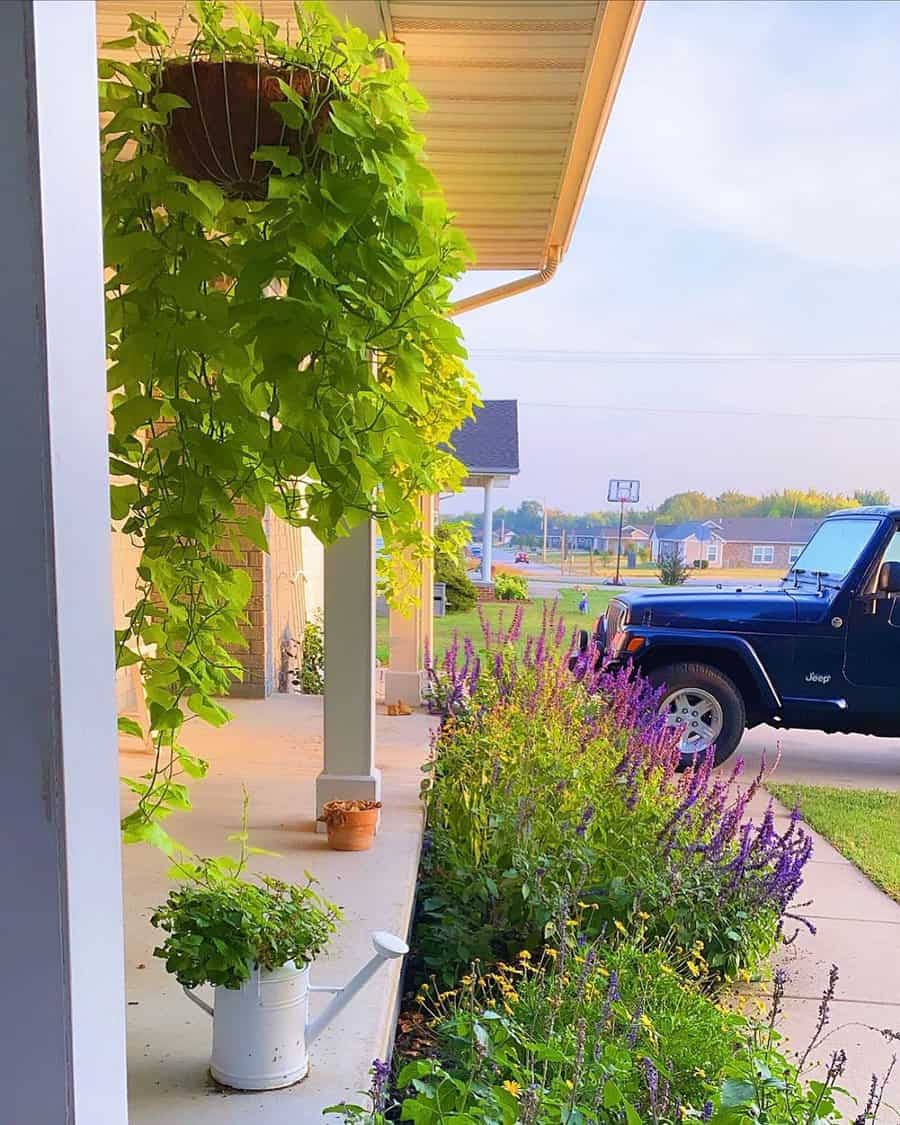
21. Solar Lights Charm
Integrate solar lights for a charming effect. They’re energy-efficient and easy to install. Place lights strategically to highlight specific plants or paths. Solar lights come in various styles, from stakes to lanterns, allowing for personalization. They provide ambient lighting and can enhance garden safety.
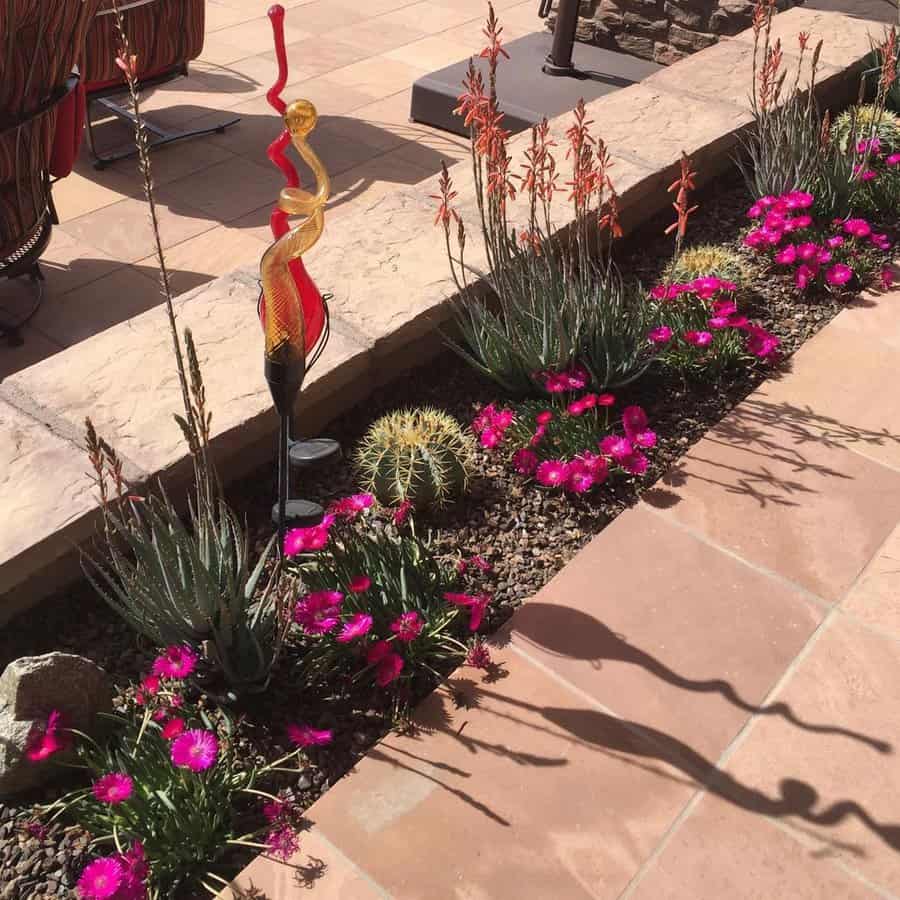
22. Anemone Accents
Anemones thrive in partial shade and well-drained soil. They bloom in spring or fall, depending on the variety. Soak the tubers in water before planting to encourage growth. Plant them 2-3 inches deep and water regularly. Anemones are perfect for adding delicate, whimsical touches to your garden.
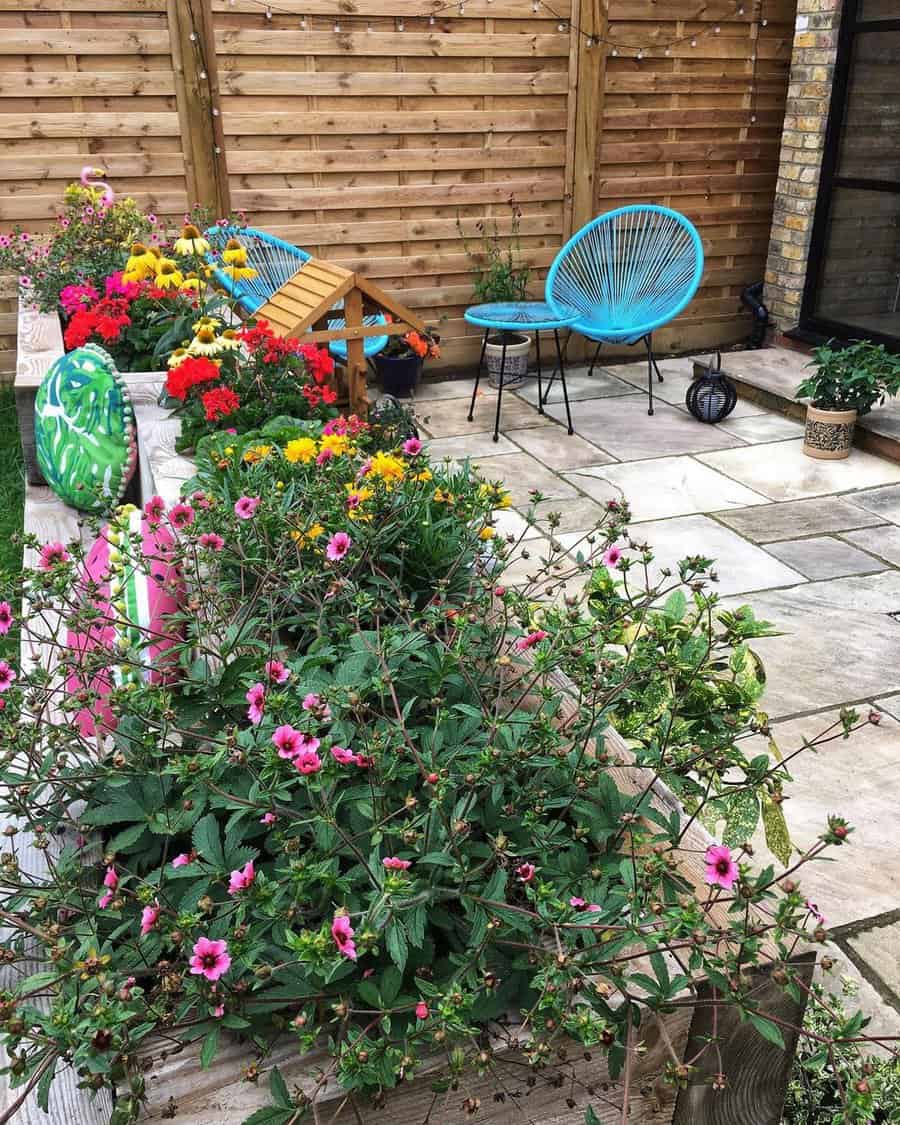
23. Tapestry Garden Magic
Combine tall orange blooms like dahlias or cannas with a white-flowering underplanting such as alyssum. This creates a visually striking contrast. The taller plants serve as a backdrop for the shorter, dense carpet of white blooms. This design approach creates layers of texture and color, adding depth to your garden.
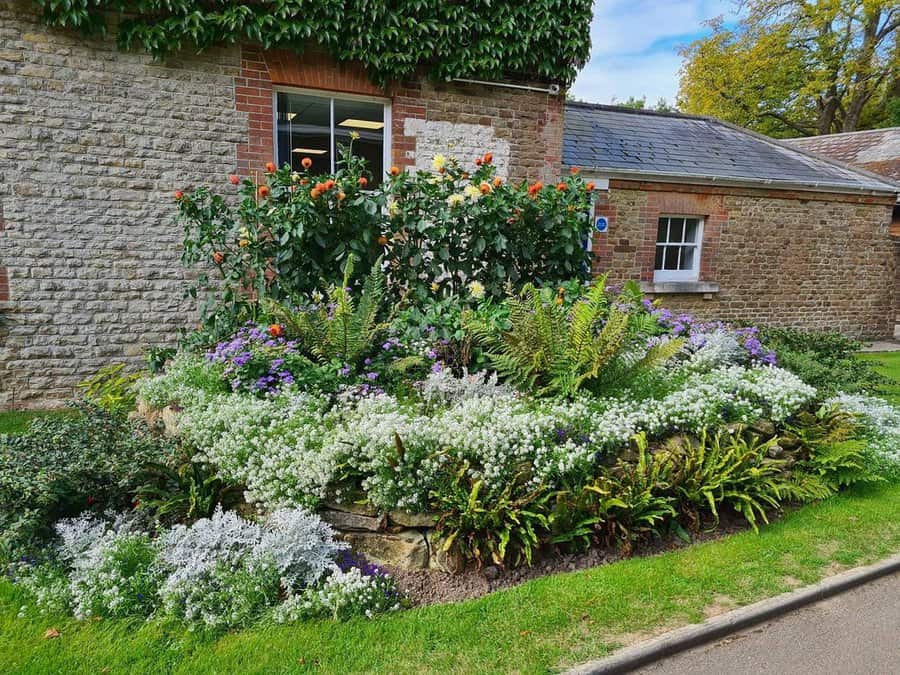
24. Metal Bed Elegance
Use metal raised beds for a modern, sleek look. They’re durable, easy to assemble, and great for controlling soil conditions. Fill with a mix of topsoil, compost, and if needed, sand for drainage. Metal beds heat up faster in spring, giving a head start to your plants. They work well for vegetables, herbs, and flowers.
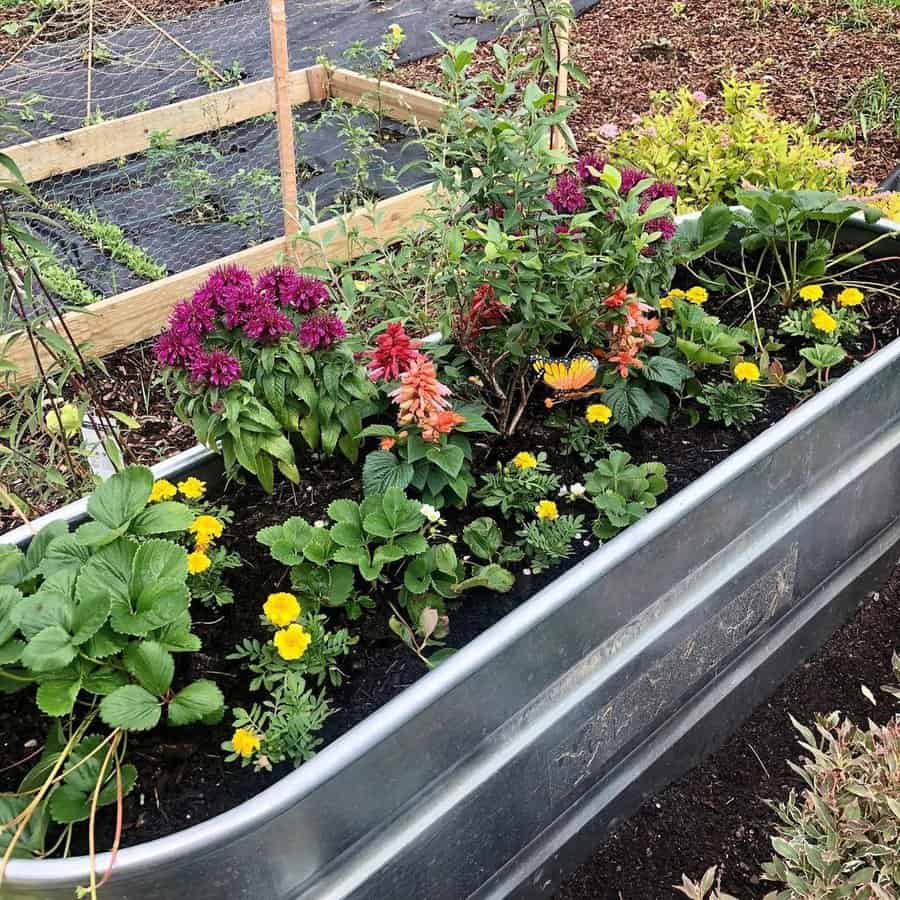
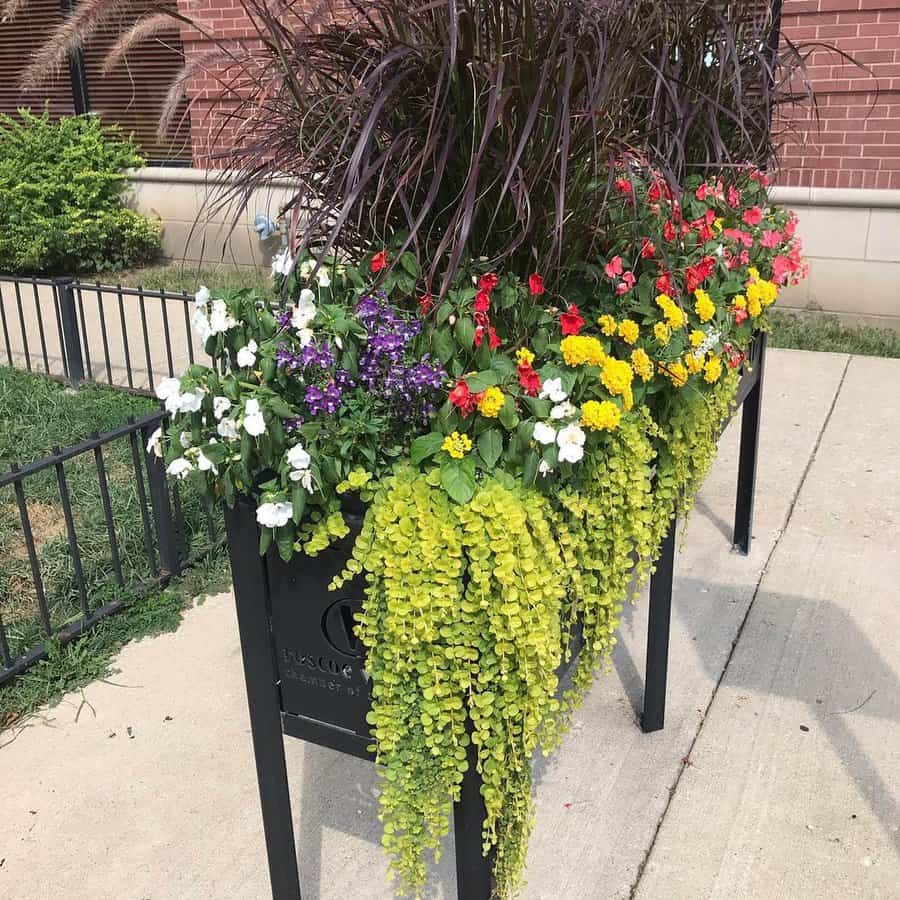
25. Xeriscape Beauty
Incorporate drought-tolerant plants like sedum, lavender, and Russian sage for a xeriscape bed. This approach reduces the need for irrigation, making it environmentally friendly and low maintenance. Use gravel or stone mulch to retain moisture and suppress weeds. Xeriscaping can be both beautiful and sustainable.
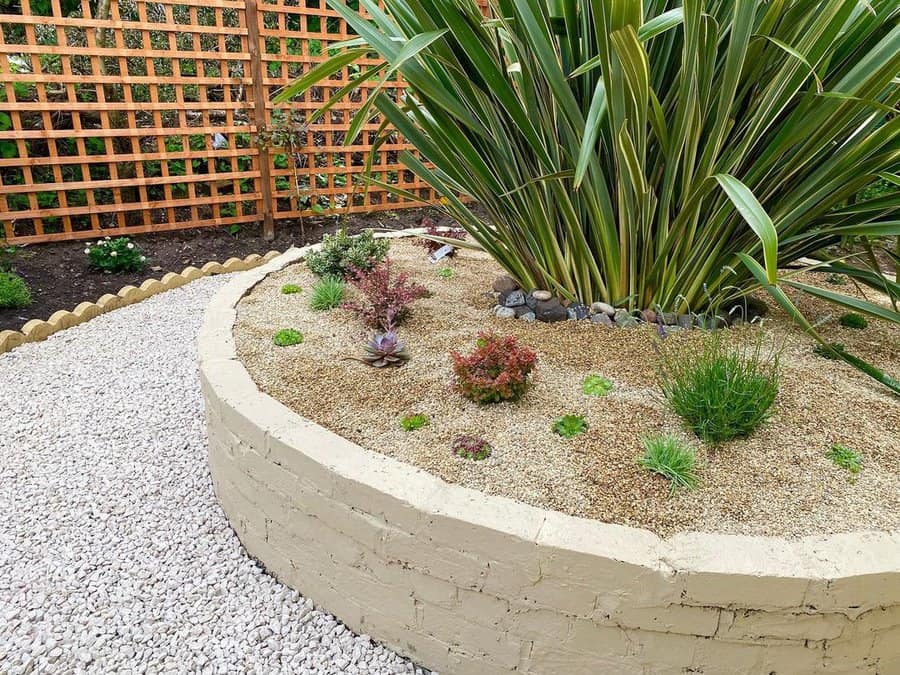
26. Brick Edge Definition
Brick edging offers a classic and versatile look. Lay bricks in your desired pattern along the garden bed’s perimeter. You can bury them halfway or lay them flat. Bricks help define the bed’s boundary, prevent grass from encroaching, and provide a clean transition between different areas of the garden.
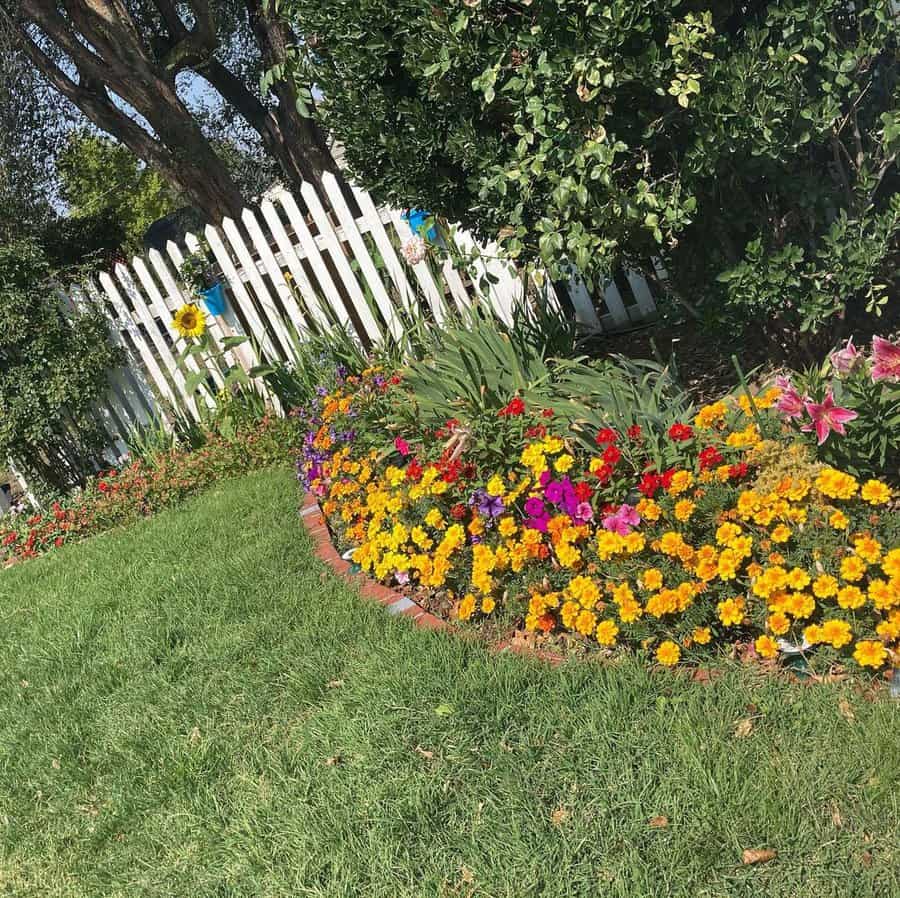
27. Natural Stone Charm
Use natural stones for a rustic and organic edge. Varying sizes and shapes of stones add texture and natural beauty. Dig a trench along the bed’s border and place the stones securely. This type of edging blends seamlessly with the landscape and is particularly effective in rock gardens or with native plantings.
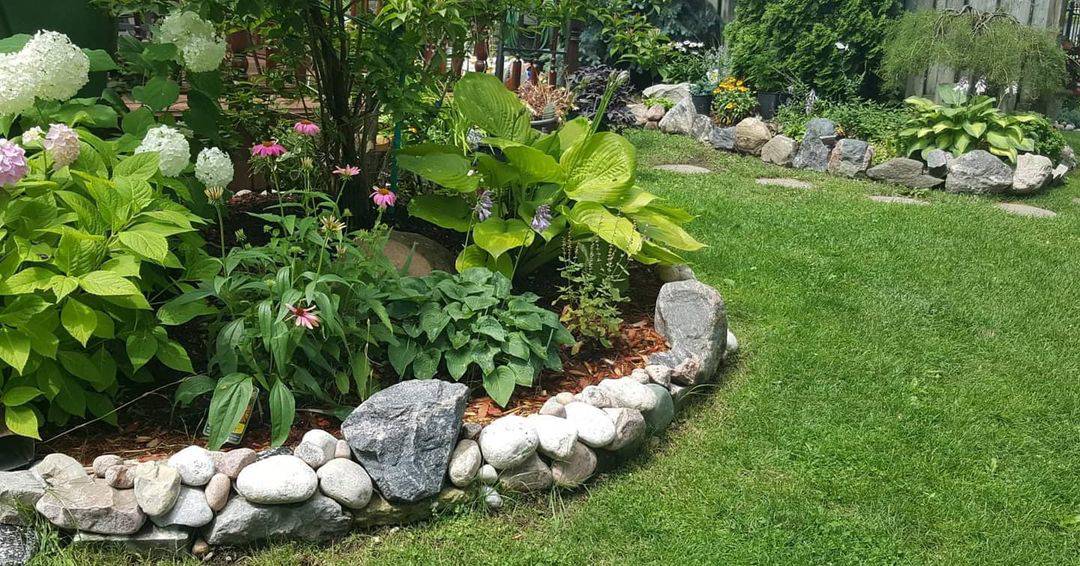
28. Tree Circle Petunias
Plant a circular bed around a tree with petunias for a splash of color. Ensure the bed doesn’t disturb the tree’s root system. Choose petunias that complement the tree’s foliage and the surrounding landscape. Maintain a balance between watering the flowers and the tree’s needs, avoiding overwatering.
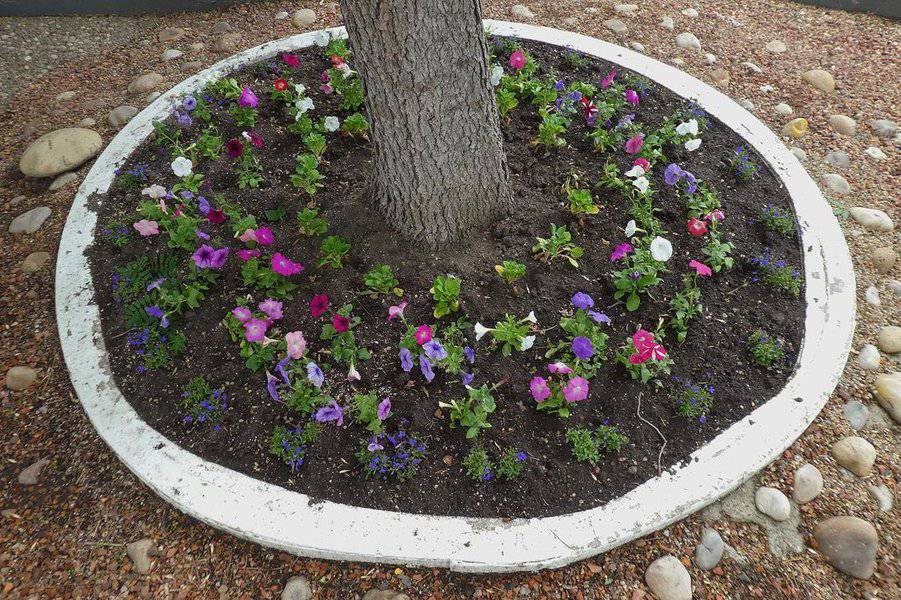
29. Impatiens Impact
Impatiens are great for shaded areas and add vibrant color. Plant them in moist, well-draining soil. They require regular watering, especially in hot, dry conditions. Impatiens are available in a variety of colors, allowing for diverse and lively bed designs. They fill in quickly, creating a lush, full appearance.
